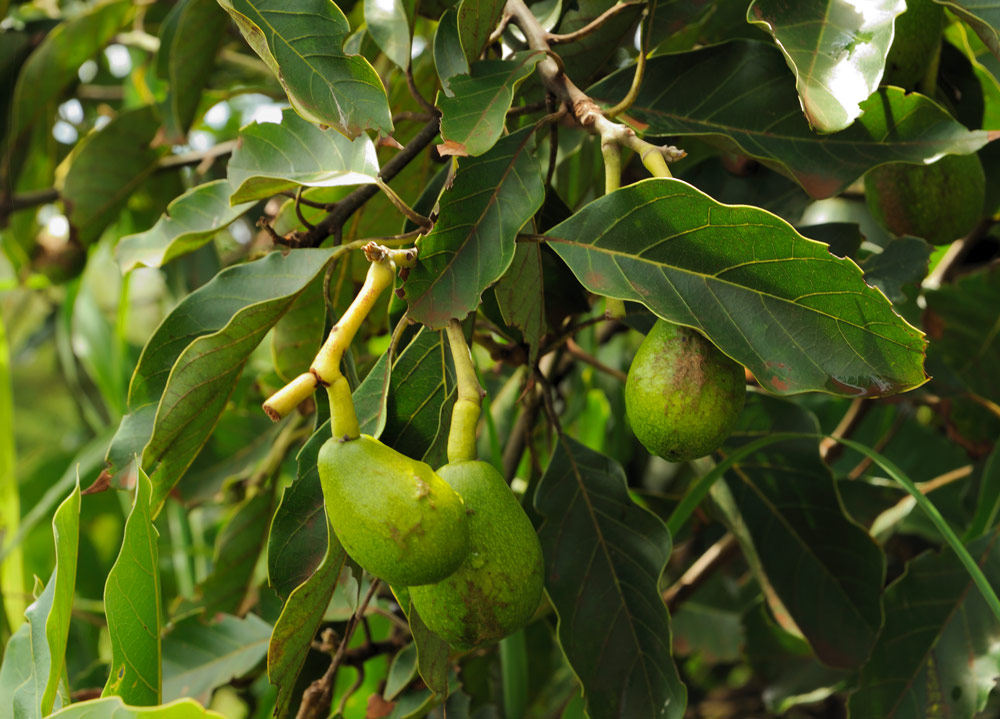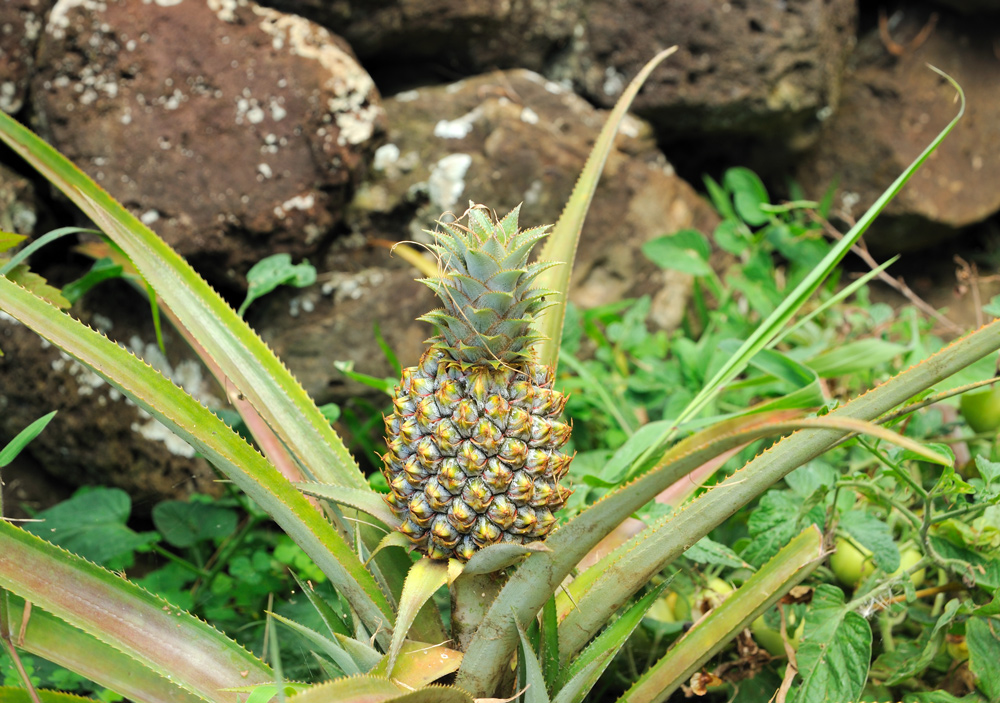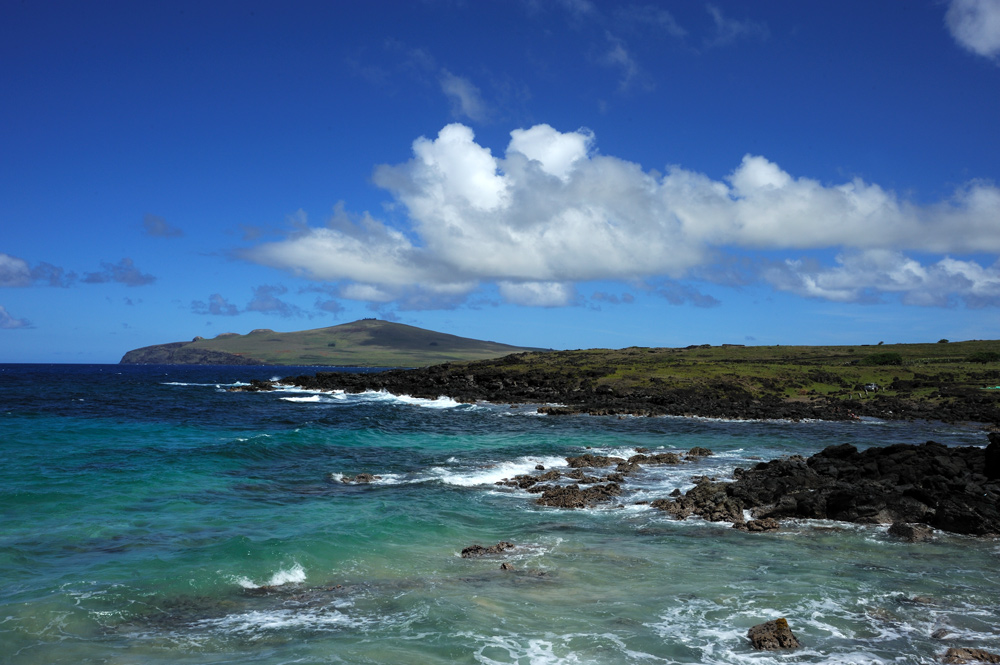
In my childhood, I engrossed myself into the books of Thor Heyerdahl. I dreamed about balsa rafts, papyrus boats, and huge stone statues moai, that slowly walked on their own on the little island in the middle of the ocean.
So, when we unexpectedly and in the last moment included the Eastern Island into our South American expedition, I was happy. And immediately added a couple of Heyerdahl’s book into my book reader to refresh my memory during the flights.
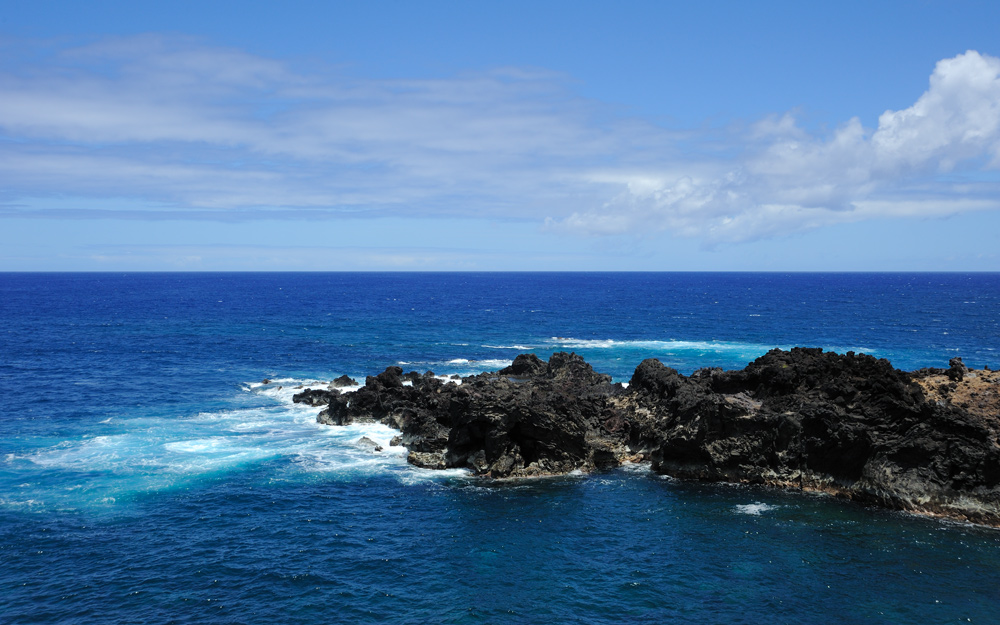
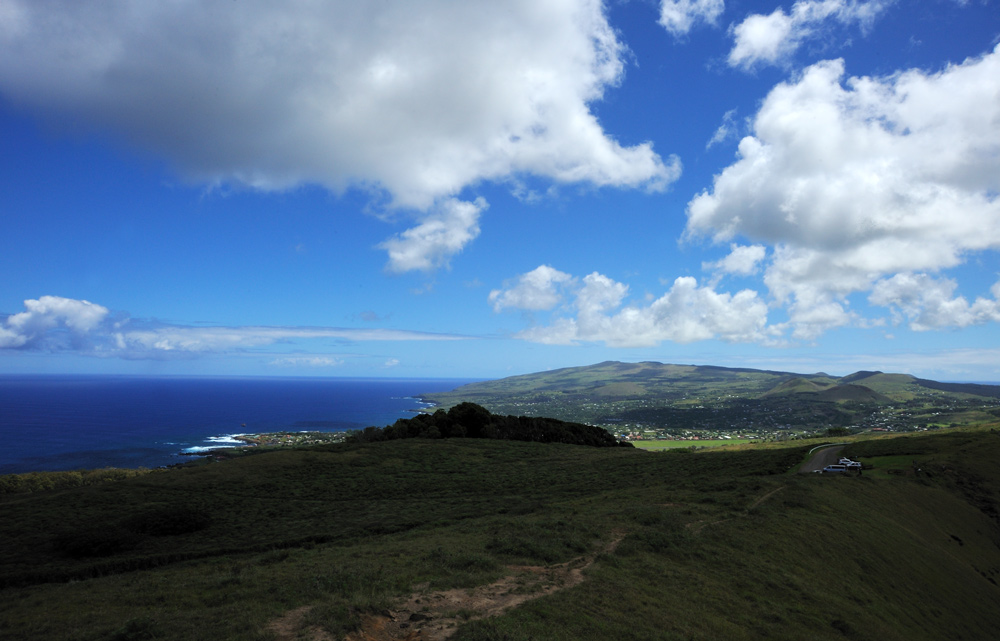
Officially, the name of the island is not Easter Island any more, but Rapanui. The name “Eastern Island” was given to the island by Dutch navigator Jacob Roggevee, who was the first Europen that came to the island. It happened on April 5 1722; it was Easter Sunday, so the island was named after this.
In 2018 Chilean government renamed the island. Rapanui is a Polynesian name, however, it is not the name that the islanders used. Sailors from Tahiti called the island by this name. Looks like, the local islander didn’t have the real name at all. They used different epithets, like Bellybutton of Eart
(Te-Pito-o-te-henua), but that’s it. I have no idea why the government decided to change one non-native name to another non-native, possibly to bring Polynesian identity or disoblige Dutches.
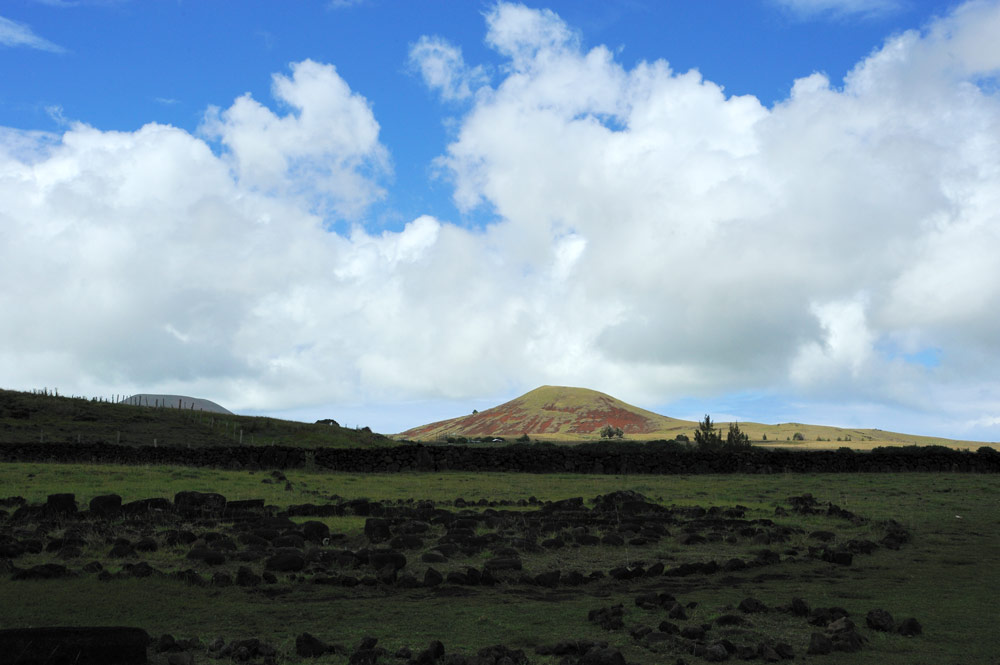
Eastern Island is the most remote place in the world if think about civilization. There is 3514 km to the Chilean seaside and 2075 km to Pitkern, the closest populated island (very unusual island, I should say).
Only Tristan-da-Kunya can compete with Eastern Island, it is far away from the closest island but closer the mainland. Well, they can share the stand.
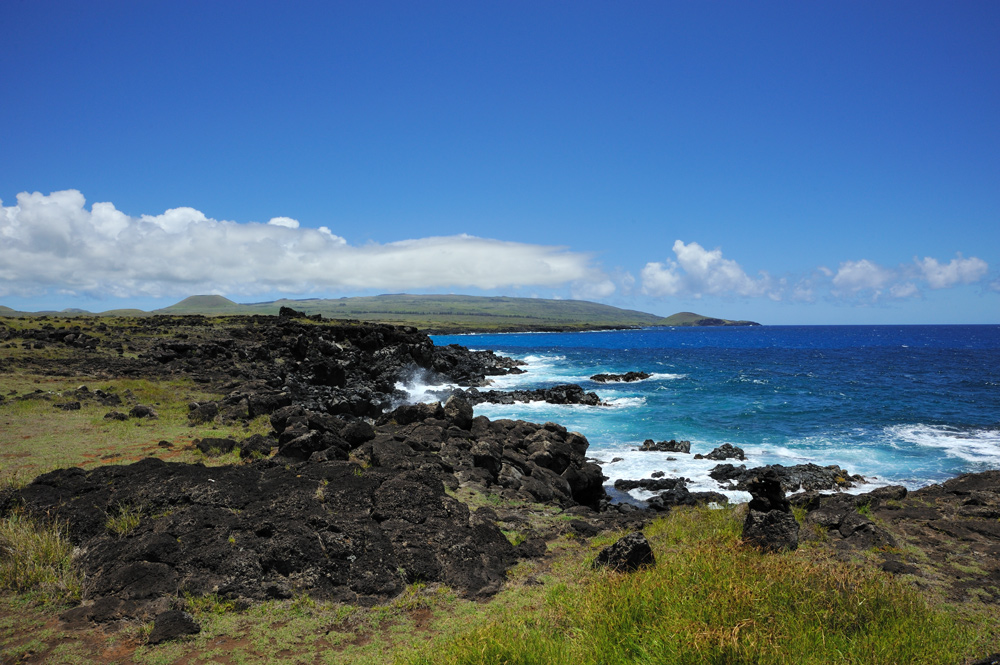
Until the 1960s the island can be reached only by the ocean. Moreover, regular passenger carriers didn’t exist. Use your own transport (balsa raft, for example) or join the Chilean warship that visited the island twice per year. In the 60s Americans built the airdrome for their military base, and this airdrome started to use for civilian purposes also. Later NACA decided that the Eastern Island is a perfect place for shuttle emergency landing, and built flight runway 3.3 km long. The rare airport can say that it has such a runway. Anything can land here. The airport is international, although there are only two flight destinations: Santiago (domestic) and Tahiti (international).
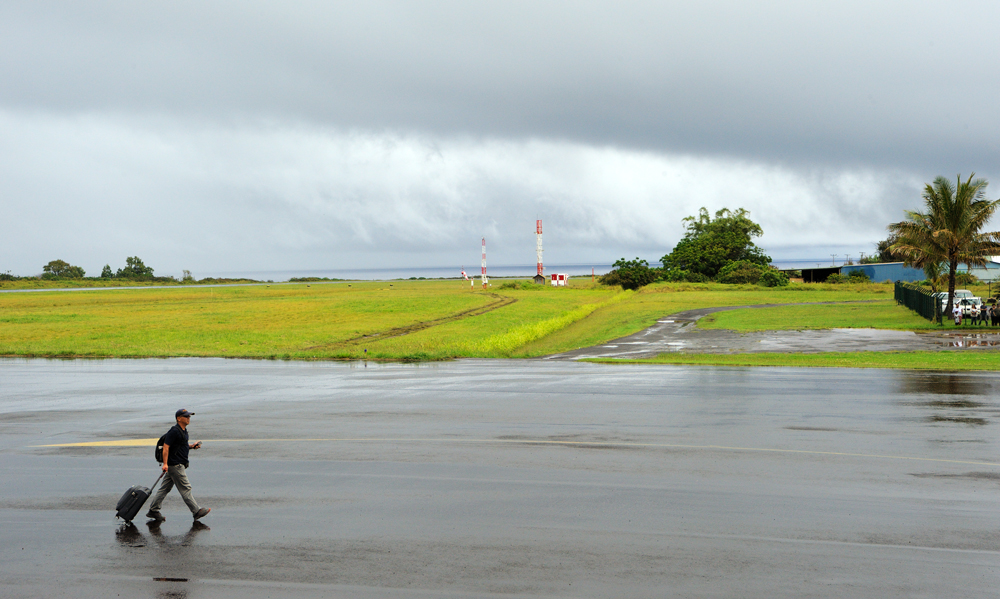
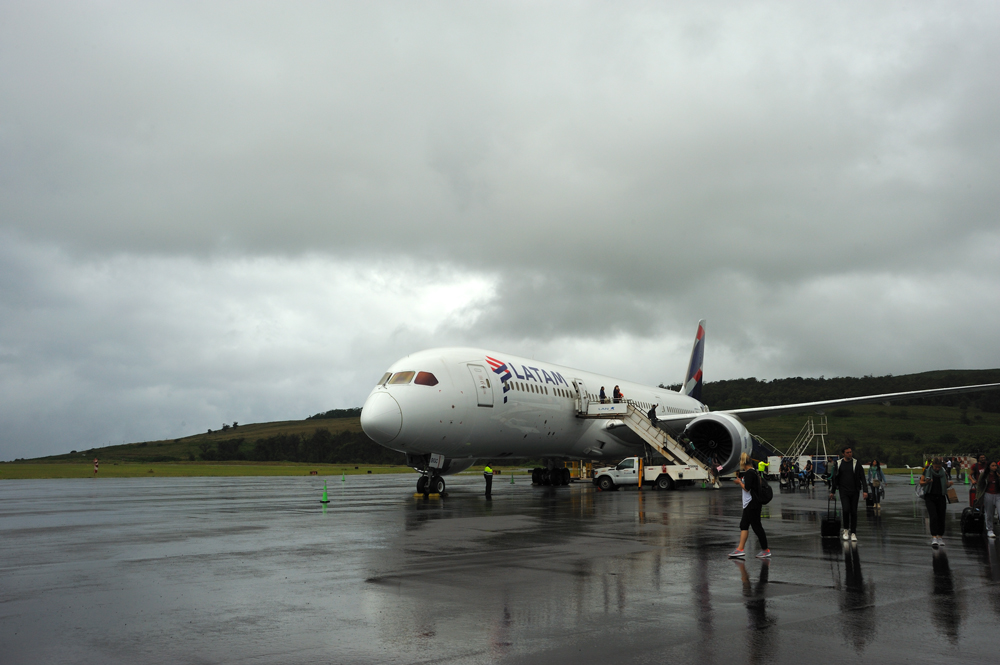
Birdman stylizations meet tourist right on the flying field adverted cultural findings.
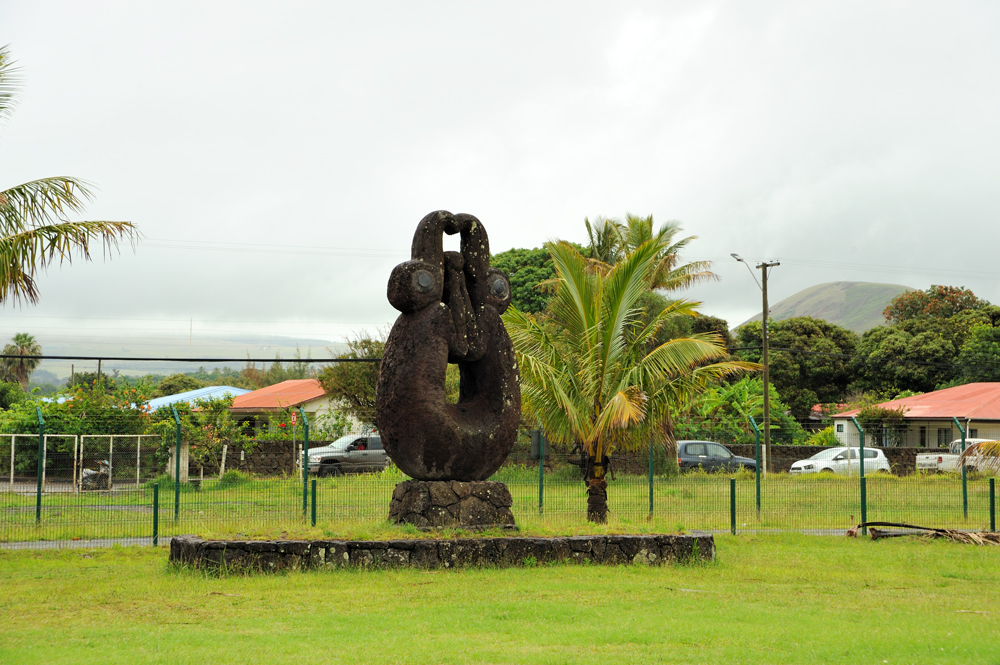
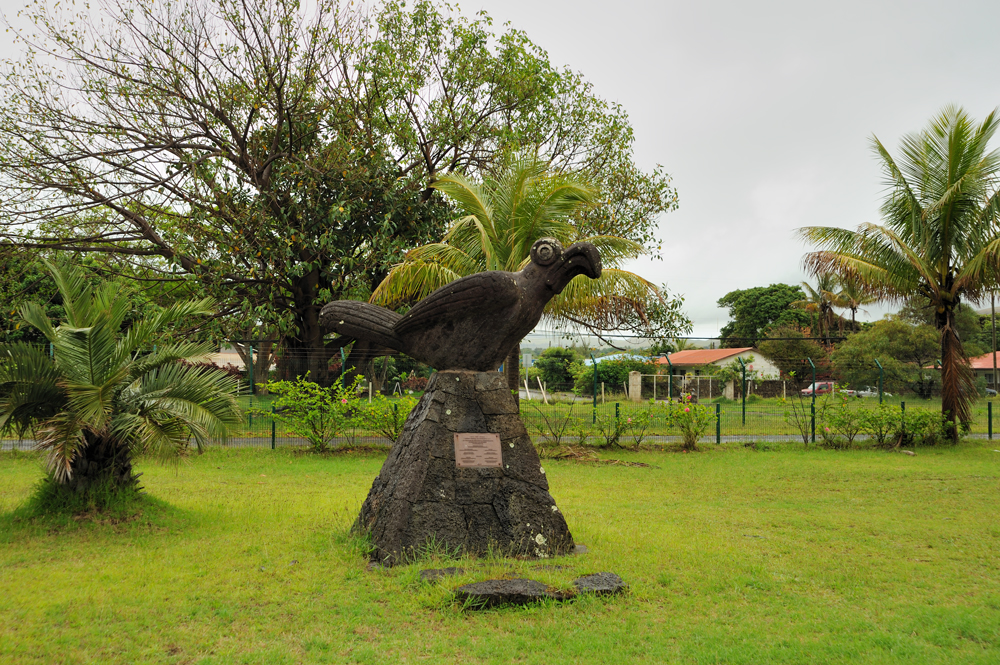
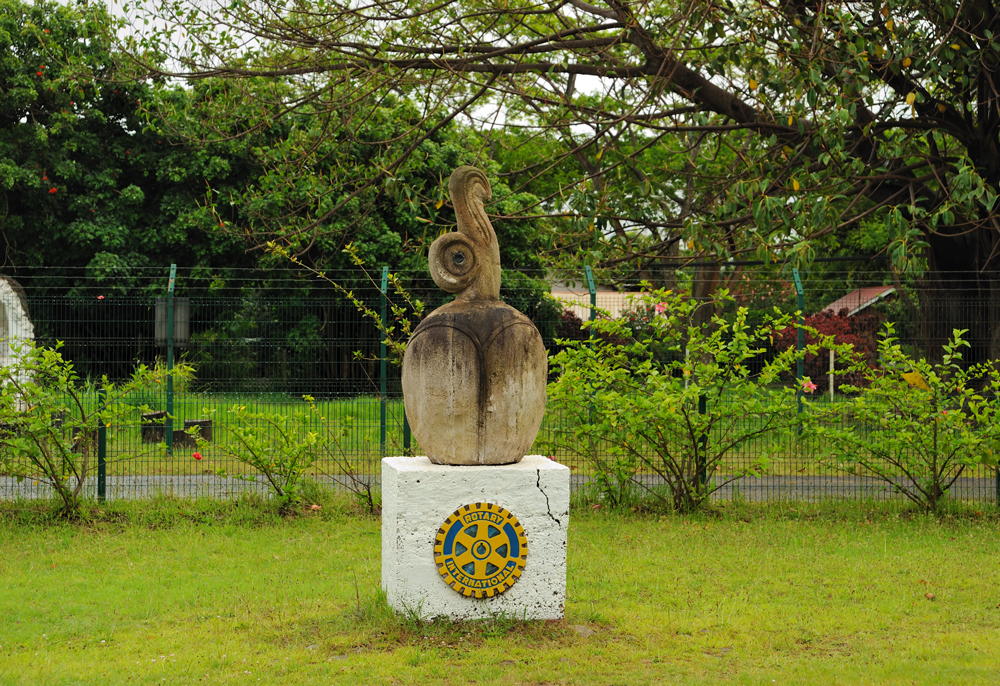
Airport building (well, I skip the word “shed”) is very small and already cannot house quickly growing amount of island visitors.
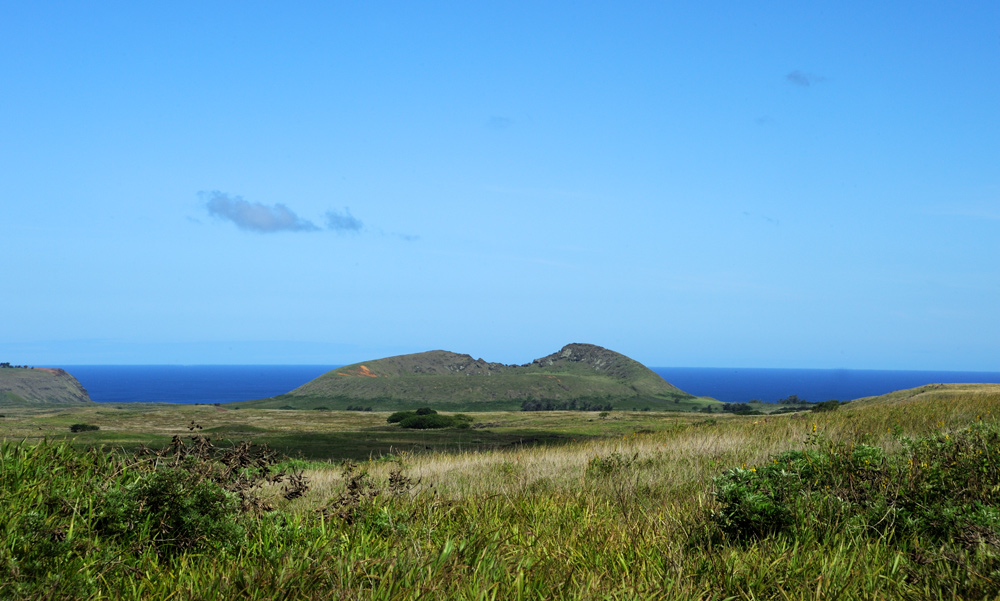
The island is very small, it is a triangle (16 x 18 x 24 km), and can be walked around in one day.
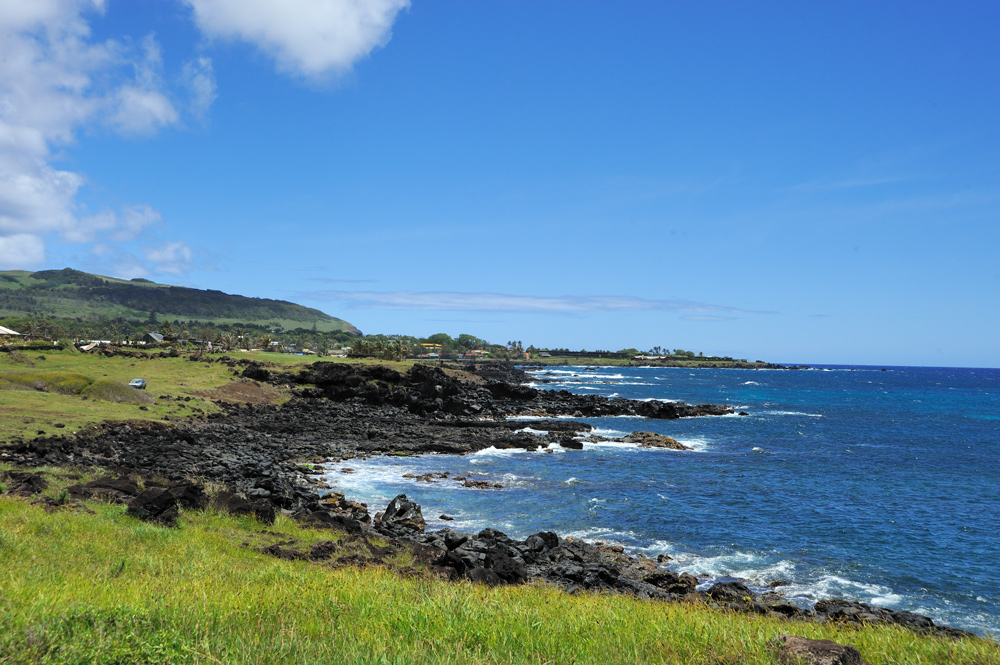
Each corner of the island has a volcano.
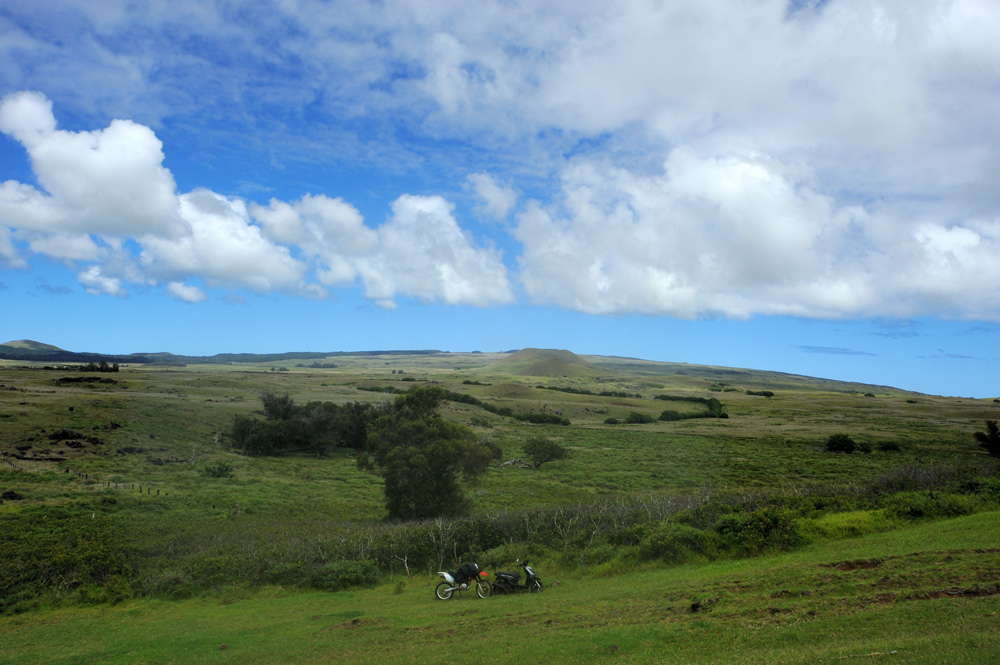
The main part of the island is formed by volcano Terevaka. Its summit, 539 meters, is the highest point of the island.
The view from the north slope of Terevaka.
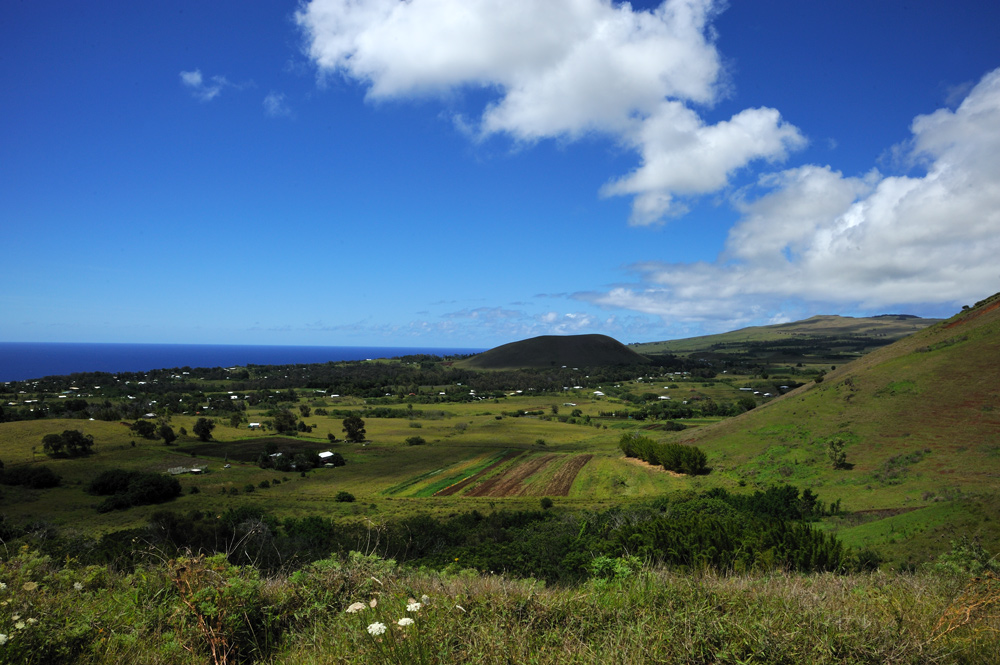
One of the side craters of Tereveka, Rano Raraku, is a centre of the cultural life of ancient islanders and one of touristic popular place nowadays.
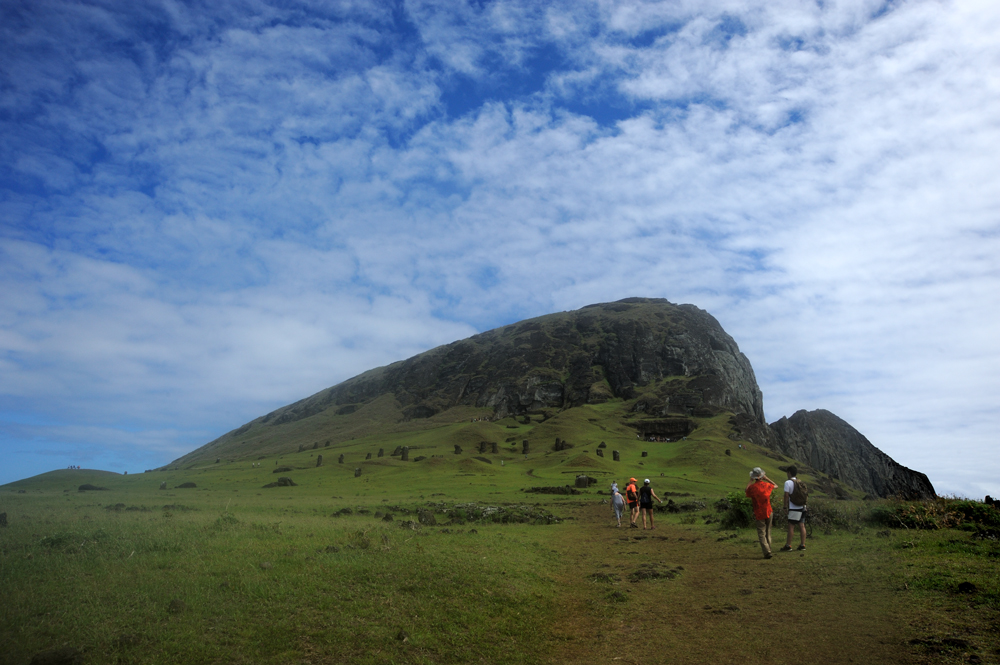
Two lesser volcanoes mark western and eastern corners of the island.
The eastern corner is formed by Puakatike.
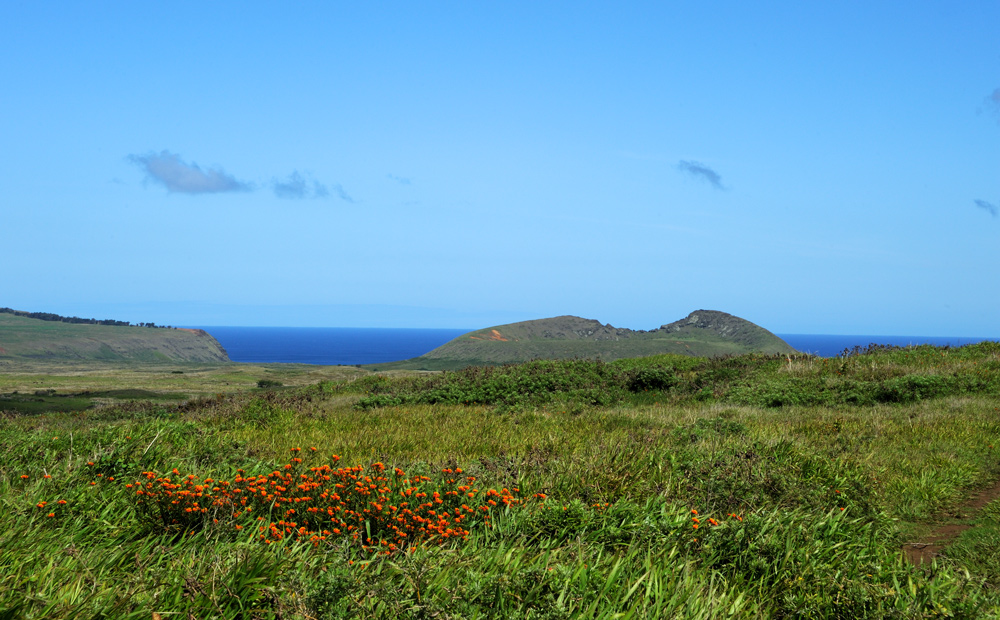
View from volcano Rano Kau (west corner of the island).
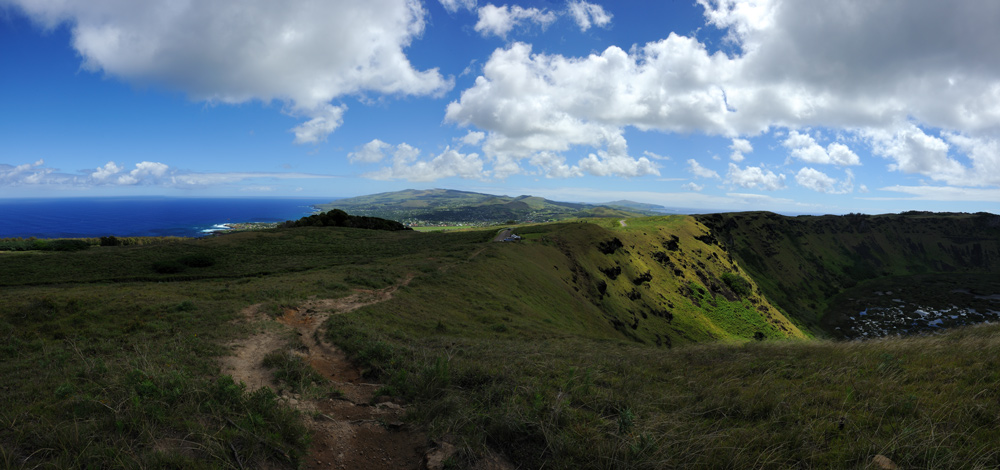
The climate is blissful. The island is in the tropics, 27 latitude, but cold Gumbolt current and wind from Antarctica cool the heat down. 19-25C year-round. Plenty of rains for watering. Don’t forget, the temperature is warm, but the sun is still tropical and hot, it is very easy to get sunburns. Don’t forget about sunscreen.
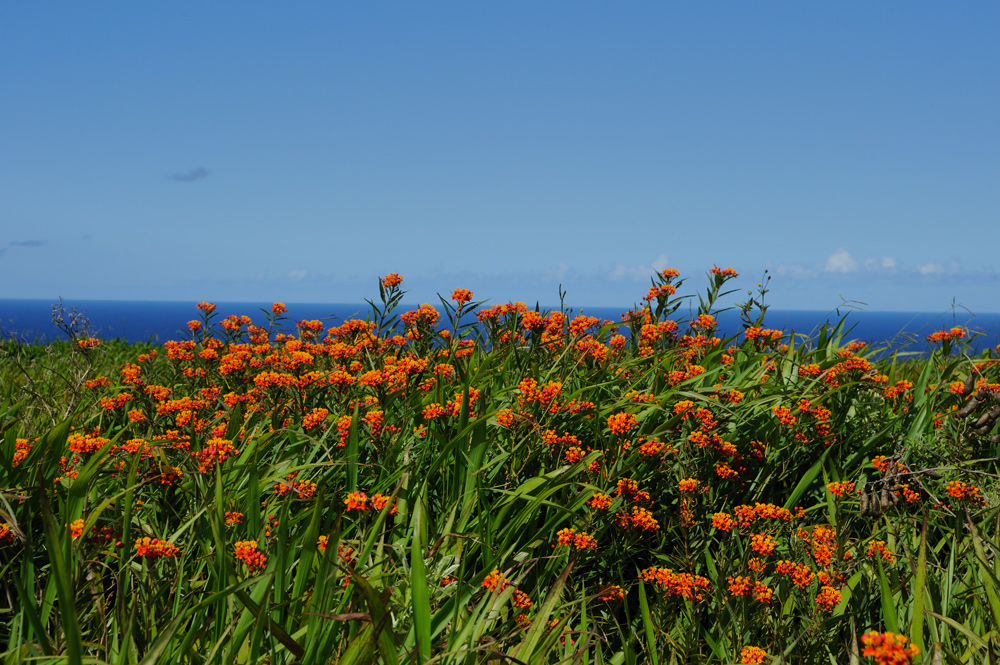
Despite plenty of rains, the island has a problem with fresh water. Volcanic soil cannot keep the water, and it quickly passes to the ocean. The only permanent sours of freshwater on the island are the lakes in the volcano craters.
The lake in the Rano Kau crater.
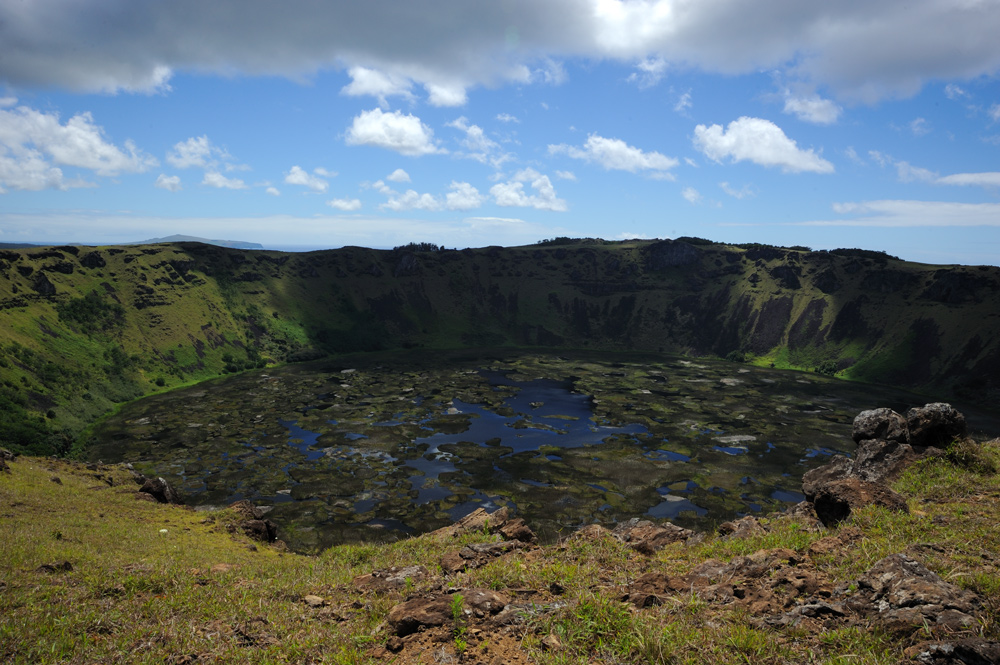
The lake in the Rano Raraku crater.
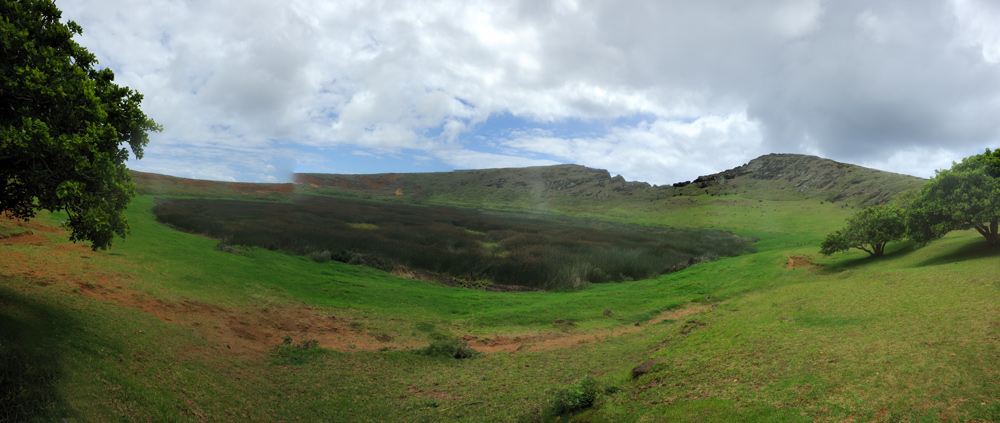
By the way, about rains and their consequences for gentle tourists (locals don’t care). We arrived on the island just after two weeks of continuous rains. Our plane landed in the middle of the tropical rainfall. The rainfall ended quickly (and we didn’t see any rains next following month), but it left us pools, dirt and neighbours. The island is full of huge cockroaches. A lot of them. When it is dry, they live outside and never show up. However, they hate the rain and quickly move into houses at the first drops of water. They occupy everything -bathrooms, kitchens and bedrooms. When the rain ends and everything dries up, they move back to nature. So, if you don’t like cockroaches, try to avoid Eastern Island on rainy days.
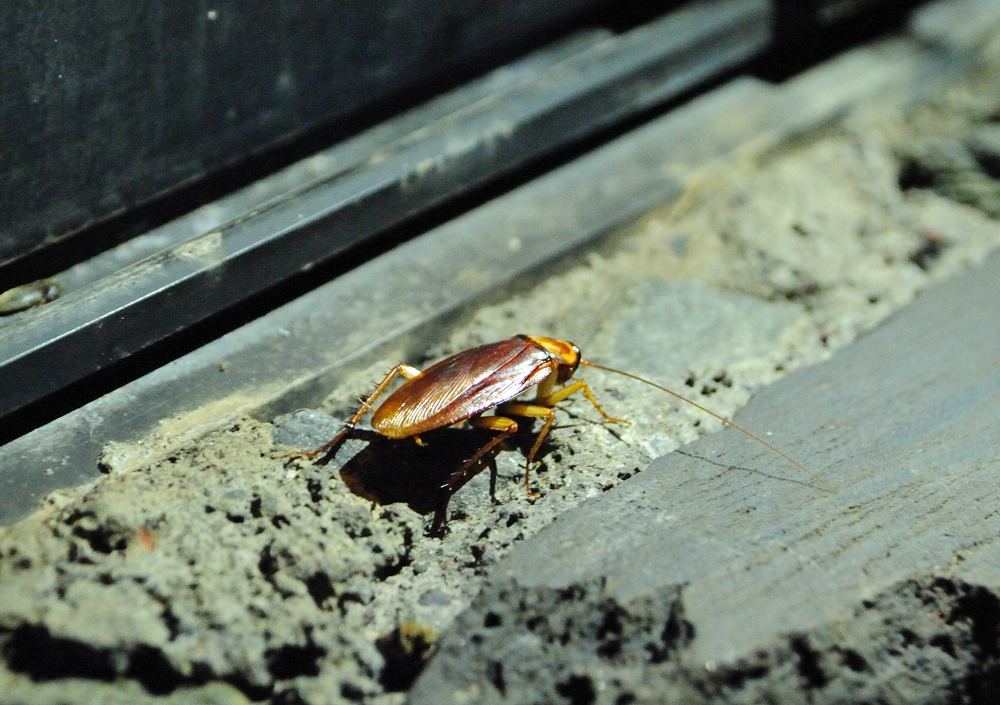
These cockroaches impressed even Thot Heyerdahl, who travelled a lot and used to everything. He had a habit of spending a night directly on the place of his research. It helped him to better accustom himself to the subject. On Easter Island, he decided not to change this habit and went to volcano Rano Raraku to spend a night in the main art studio of the ancient islanders. Heyerdahl found a comfortable stone compartment and hid in this niche from the rain. Rain! Hundreds of enormous cockroaches came to the same alcove with the same purpose. He killed some of them, but they just eat dead bodies and continued to occupy his place and his sleeping bag. It was so disgusting that he even start to think about walking back to camp under the rain in the middle of the night. And he was an experienced traveller! Finally, he pretended that they just didn’t exist and fell asleep. However, the impressions of this meeting were enough for several pages of his book.
So, be prepared to meet cockroaches. Actually they are peaceful and shy, just don’t like water.
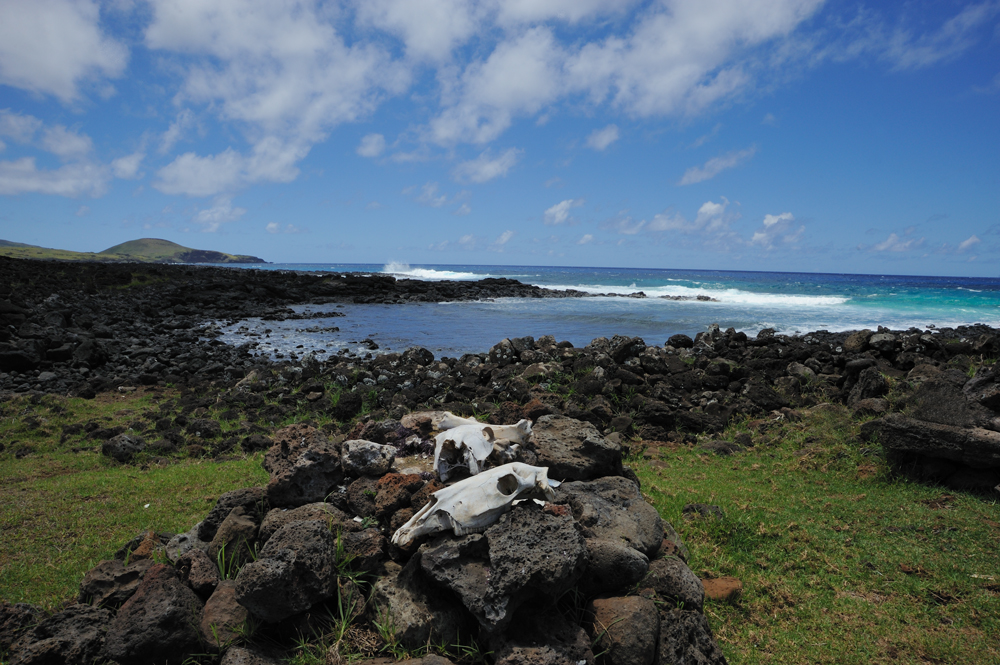
The island has a volcanic origin. Well, what also can appear in the middle of the deep ocean? So, the volcano exploded, the island grew and cooled down. Some vegetation appeared on the island, and some animal came here. To the moment of first people arriving the island was completely covered with deep forest.
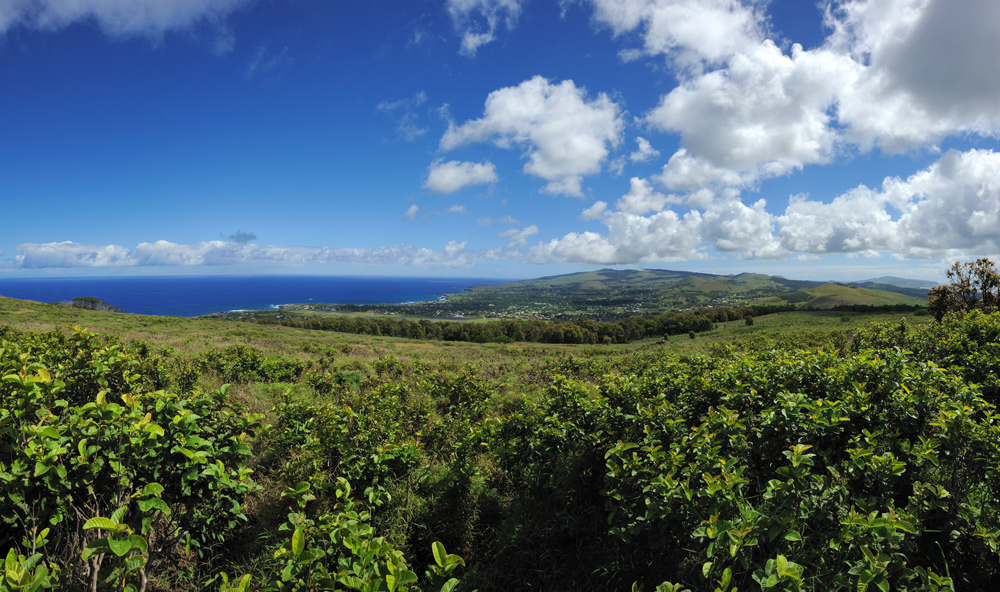
Some animal can be seen even now.
Great frigatebird
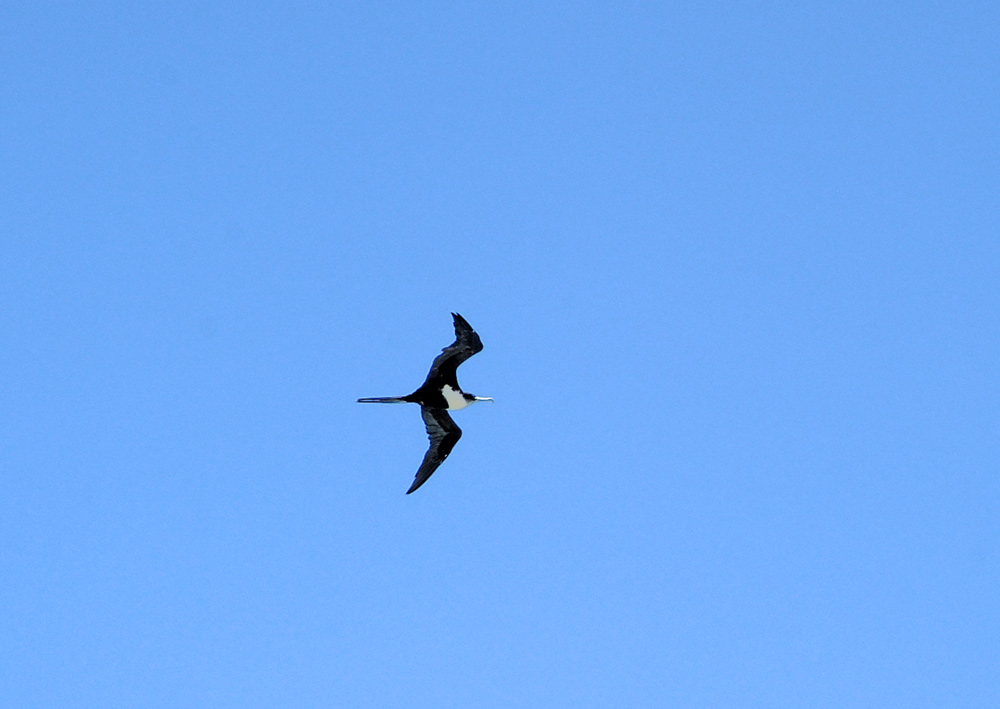
Well, there are plenty of sea-birds on the island.
Another bird that presents on the island profusely is South-American falcon
Сhimango caracara (Milvago chimango). Its food is insects and small vertebrates, so on the island, it mainly eats cockroaches.
I don’t have its portrait, but here it is on the moai head. On the island mostly chimangos seat and soil the pieces of art instead of usual seagulls and pigeons.
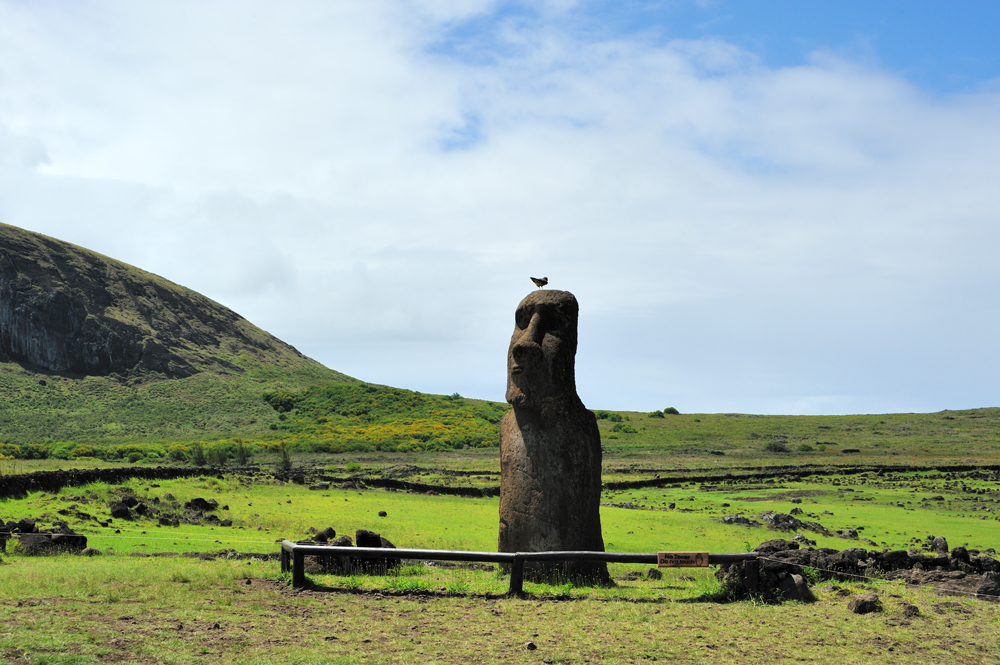
Chilean tinamou aka Nothoprocta perdicar. It brought to the island by Chilean.
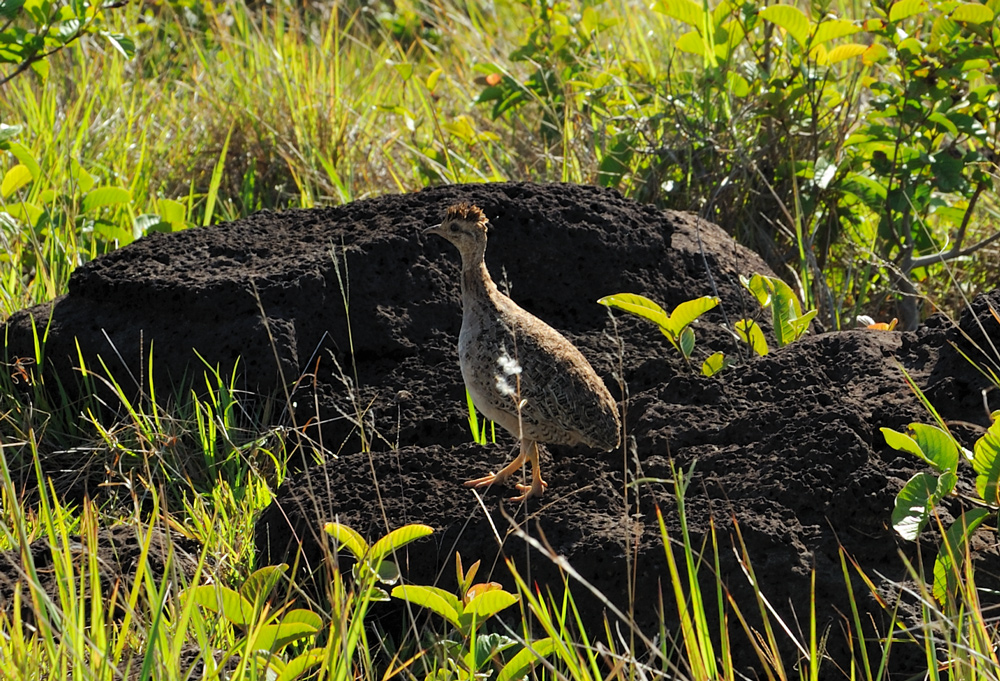
Huge snails also like human habitats, but don’t provoke such strong emotions as cockroaches.
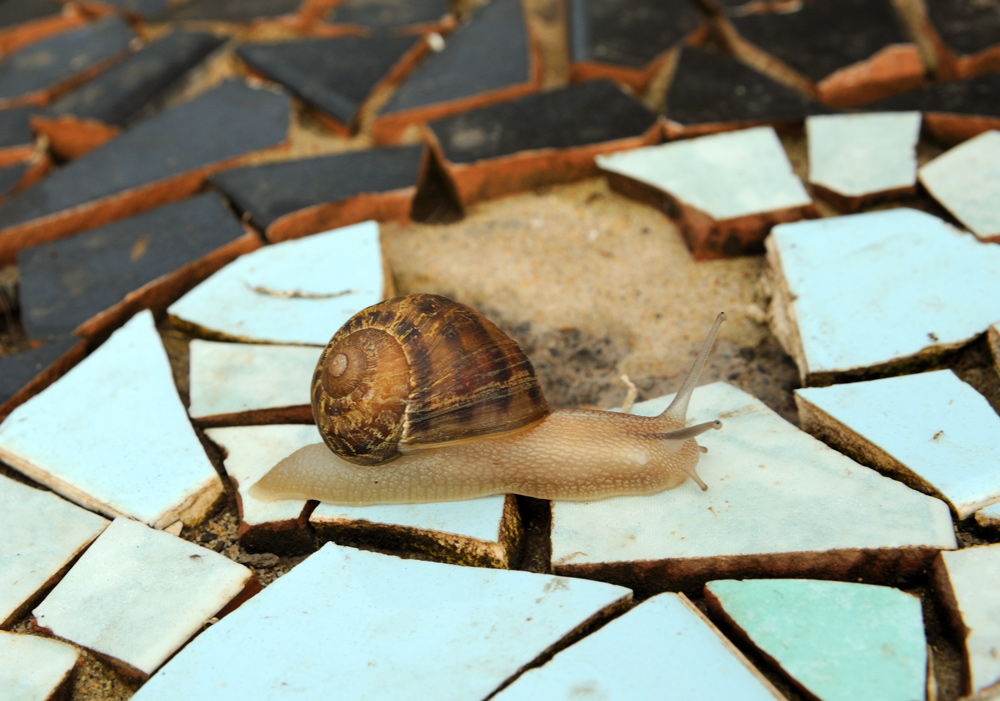
Green island flourishes in the middle of the ocean till about 1200s when Polynesian came here. Early supposed that they could come as early as 400 AC, however latest studies insist on much later time.
From ancient time Polynesian had the inclination to move from place to place and was skilled in marine navigation. About 3000 BC they left Taiwan, their motherland, and moved to South-East, consequently settled islands of Pacific ocean. Eastern island was reached lastly. Probably, most Polynesian expeditions that looked for a new home in this direction found their end in the ocean deeps missing the island. It is too small and too far from other places.
However, two huge canoes, probably form Mangareva island, landed on the white sand beach of Anakena cove. Hotu-Matu’a, the first king of the island and his people set foot on the new land.
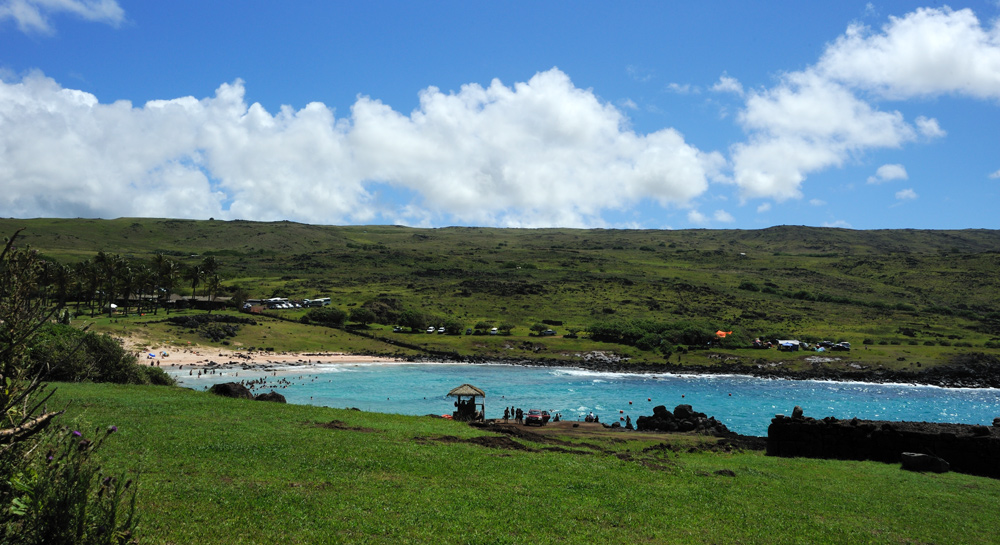
Actually, the island shore not convenient for landing. There are only two places that can be used, and Anakena is the best of them. Now it is a public beach.
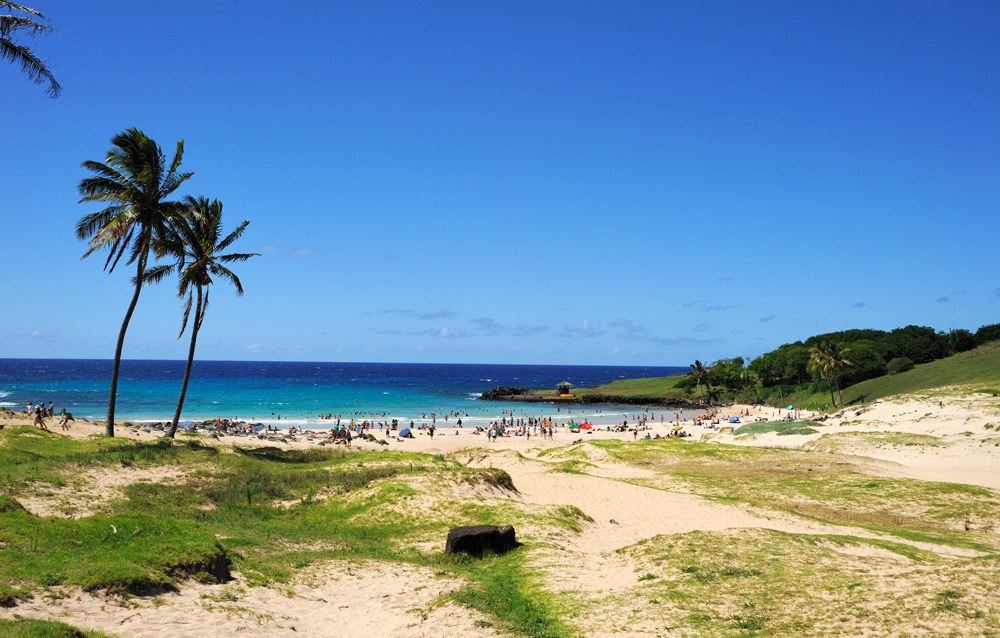
Further history of islander civilization is dark matter and can be restored only roughly and with many difficulties. The islander same as other Polynesian didn’t have writing, so nobody left notes about any past events.
Ok, it is wildly though that Eastern island is the only Polynesian island which civilization has writing, and hieroglyphic tablets rongorongo demonstrates this. However, nobody can read a word of rongorongo. Neither the islanders themself, no scientists with high experience in cryptology. The islanders affirm that they lost this knowledge before fist European came to the island and started to demonstrate interest to rongorongo. Scientists now trend toward the opinion, that this writing is a fake, and the islanders started to make nonsense pictograms in imitation to Europeans printed texts. Anyway, the source which information cannot be extracted is a bad source.
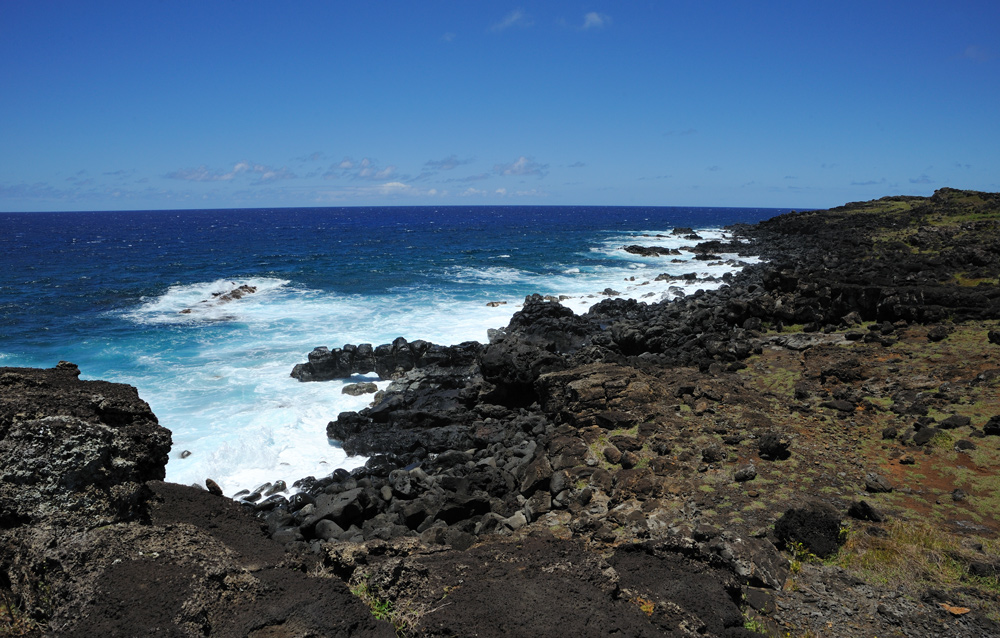
Back to the dark island history. So, there are no writing sources, actually. Legends give only indirect and incomplete information. Also to the moment when Europeans started to interest of island history (locals didn’t care about it), the island inhabitants mainly by their own efforts and partly with outside help so declined their population that most parts of the legends disappeared together with minds that kept them. The island is so far from any other inhabited lands that neighbour almost nether visited it and didn’t have any story about its inhabitants. So, the island history is restored from the very small pieces of information, mostly archaeological that also brings some limitations.
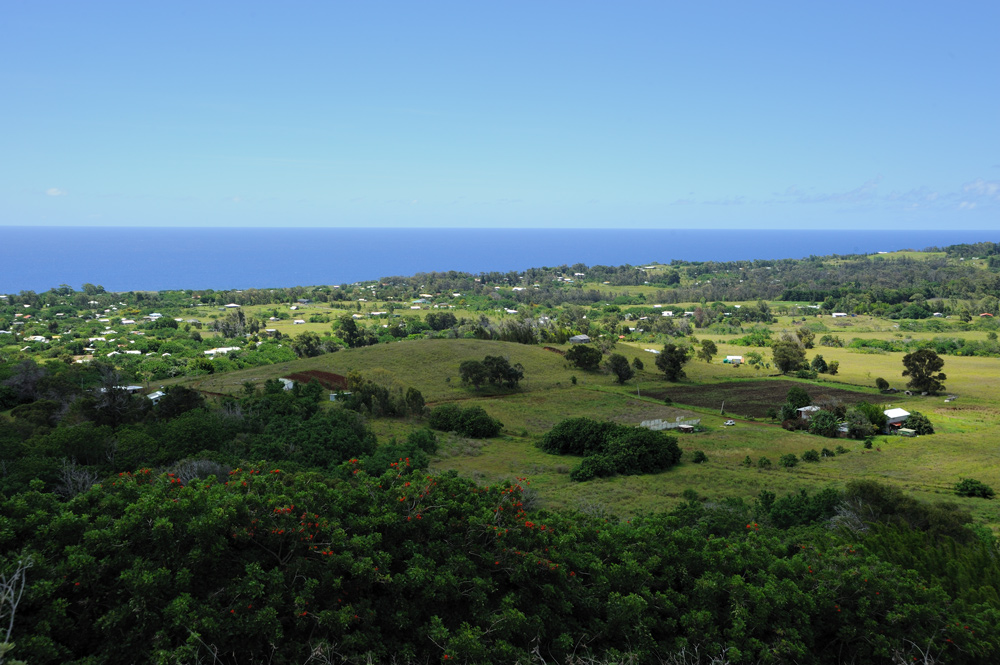
Thus, the king Hotu-Matu’a and his people set foot on the white sand beach of Anakena cove. Seven scouts searched the island and reported that the place nice and unoccupied.
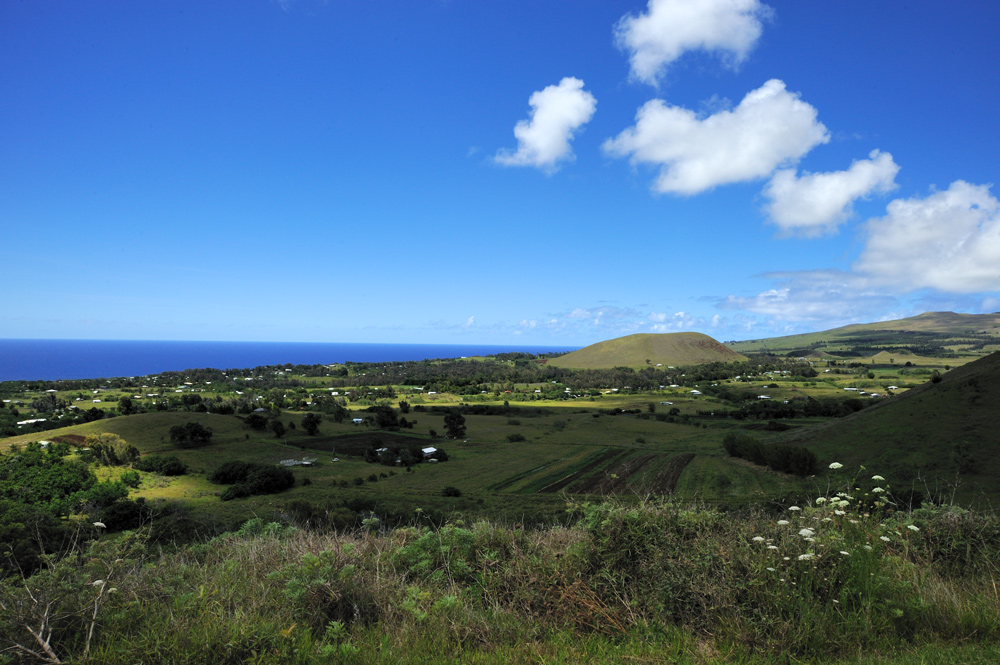
Ahu Akivi keeps moai of these brave warriors. At least, some legends say so. Ahu is a ceremonial platform. Moai is a sculpture of a person that keeps his spiritual energy, mana. Later will be more about them.
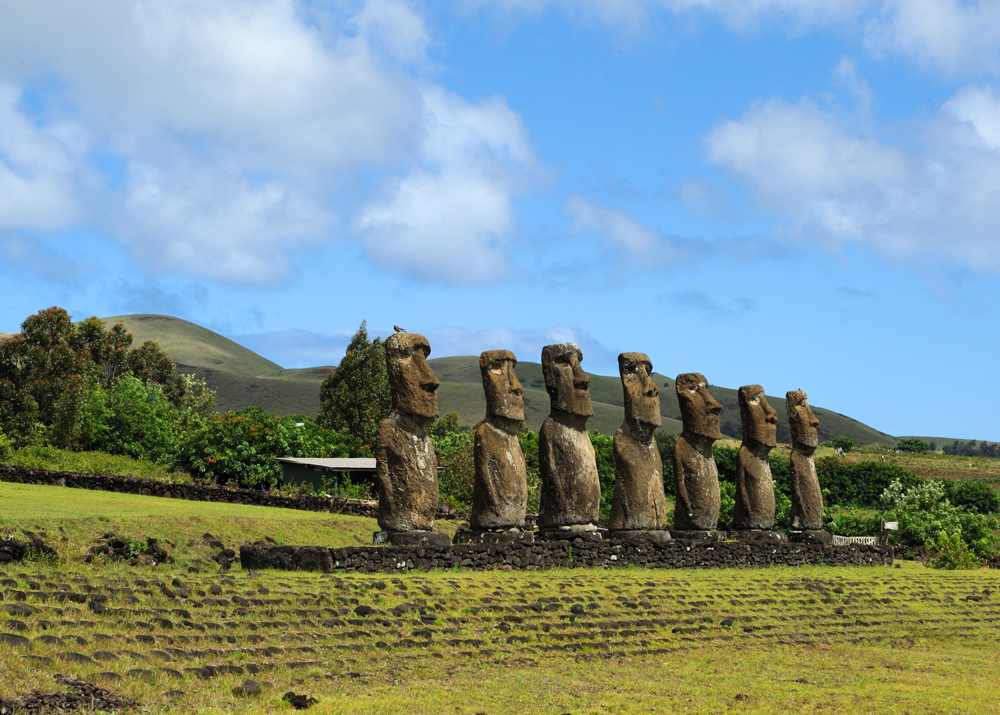
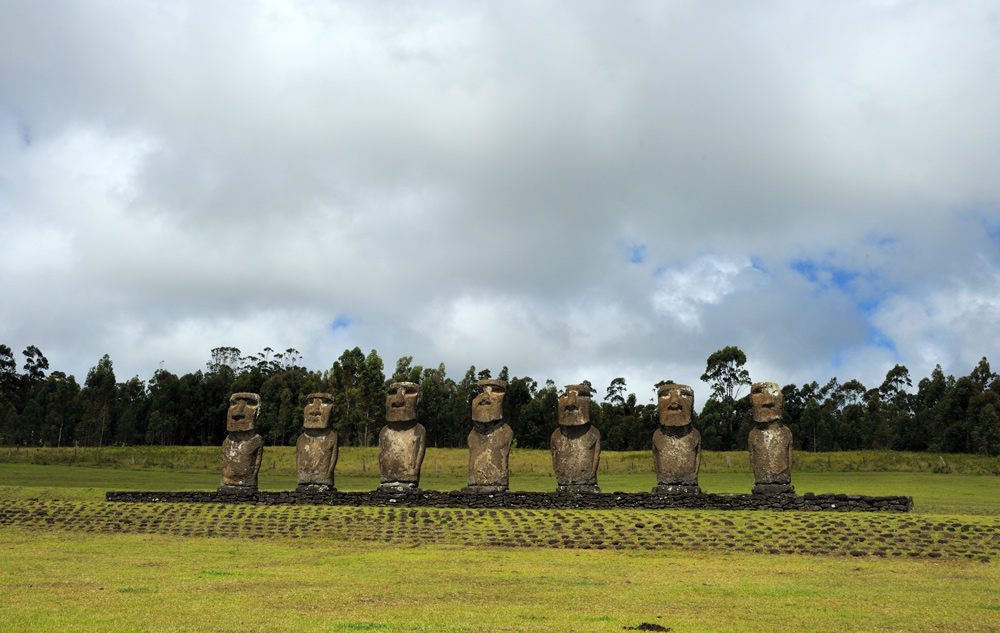
Despite the isolated location the island had some visitors. At the and of XV century Tupac Inca Yupanqui was the tenth Sapa Inca, the ruler of the Inca Empire. With him, the Empire reached its maximum greatness and prosperity. Tupac Inca Yupanqui enjoyed to travel to surrounding territories and join them to his lands. With his cares, the common territory of the Inca Empire reached almost a million km². Not a Great British Empire with its 36 million, but still huge enough, in the list of the biggest countries it is not on the last position. On top of everything also Tupac Inca Yupanqui loved sailing. For this purpose, he had a balsa raft navy with which he travelled across the ocean. During the sailing in the 1580s, this navy, probably with the presence of Tupac Inca Yupanqui in the flesh, reached the Eastern Island.
Thor Heyerdahl was a big fan of the idea that Easter Island was originally inhabited by American Indians, and Polynesian people came after them. He sailed from South America to a Polynesian island and confirmed that balsa raft can do it without a problem.
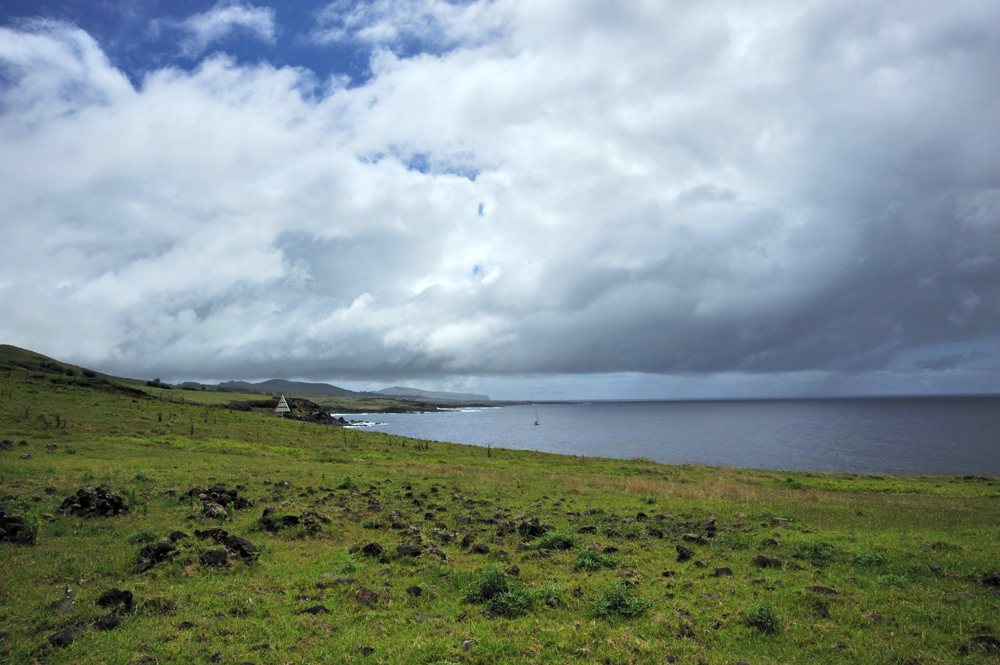
There are several sideway confirmations that Incas definitely visited the island. The islanders have a legend about a great chief named Tupa, who came from the east. Another confirmation is a cane totora that grows in the craters of Rano Raraku and Rano Kau. The studies confirmed that totora did not present on the island before the XIV century, and the only other place in the world where totora grow is the lake Titicaca in the Andes. Inca used totora for shipbuilding and could bring accidentally some alive parts of the plant to the island.
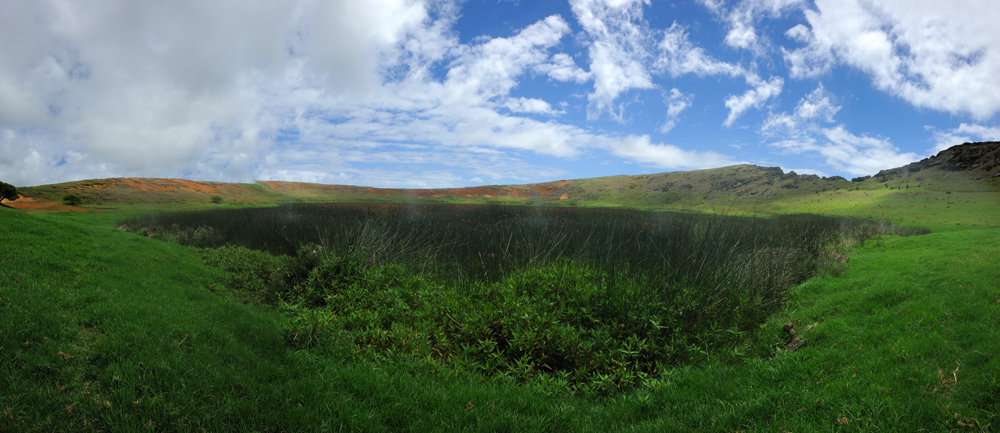
Another even more sideway confirmation is ruins of Ahu Vinapu. This ahu is very different technologically from other ones. It is built in a more skilful Inca style from basalt blocks.
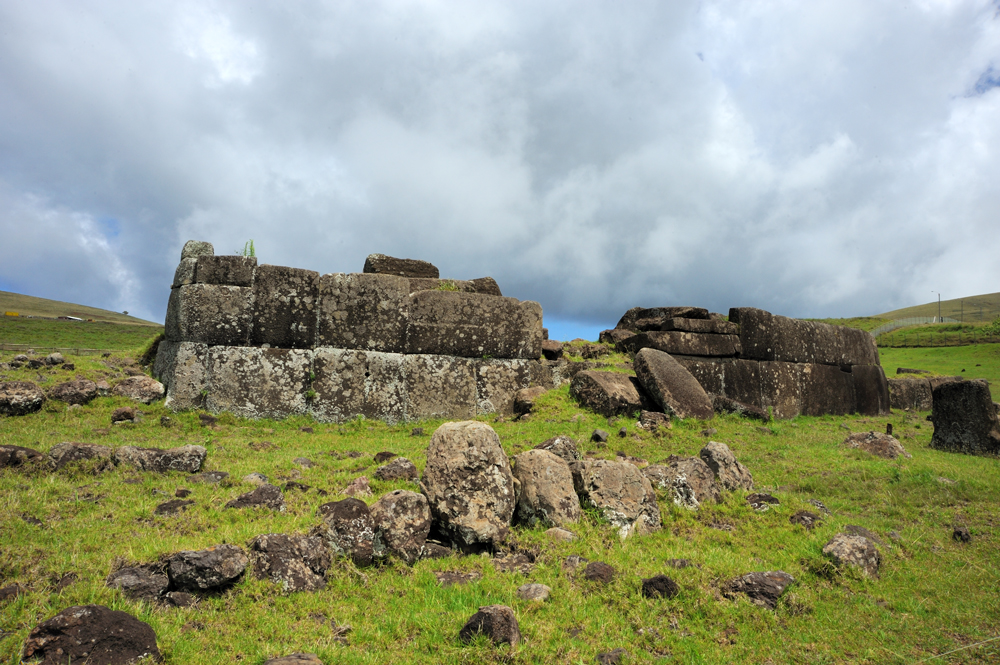
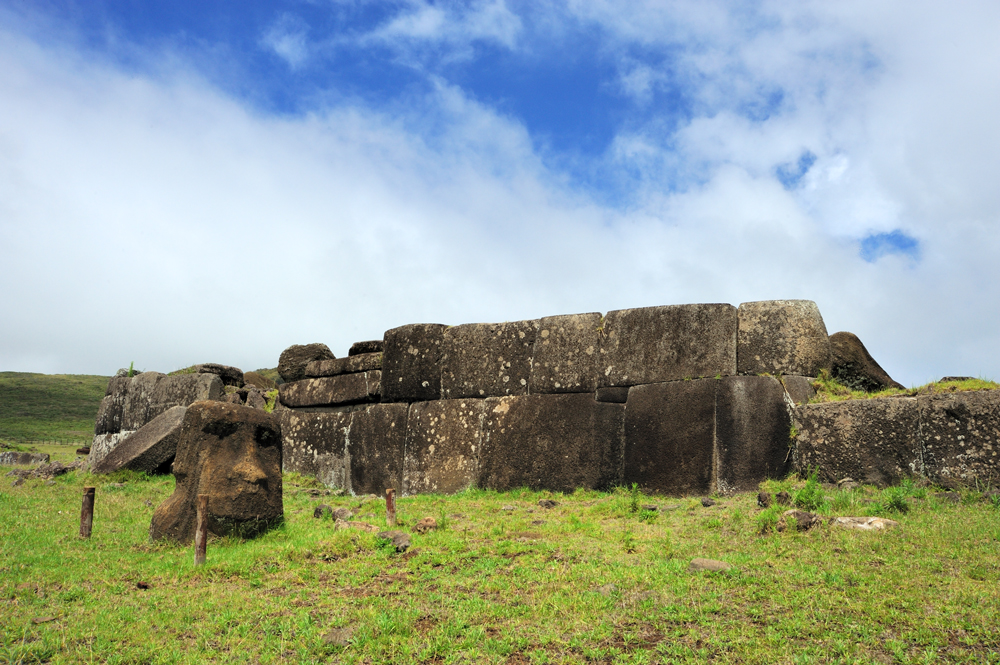
And finally, the blood that is thicker than water. Genetic studies say that native Rapanui islanders have 10% of South-American Indian gene pool. The other Polynesian people don’t.
Thus, all these combined data concludes that Inca came to the easter island when Polynesian already settled here. Inca left them their semen and memory and sailed back to their country.
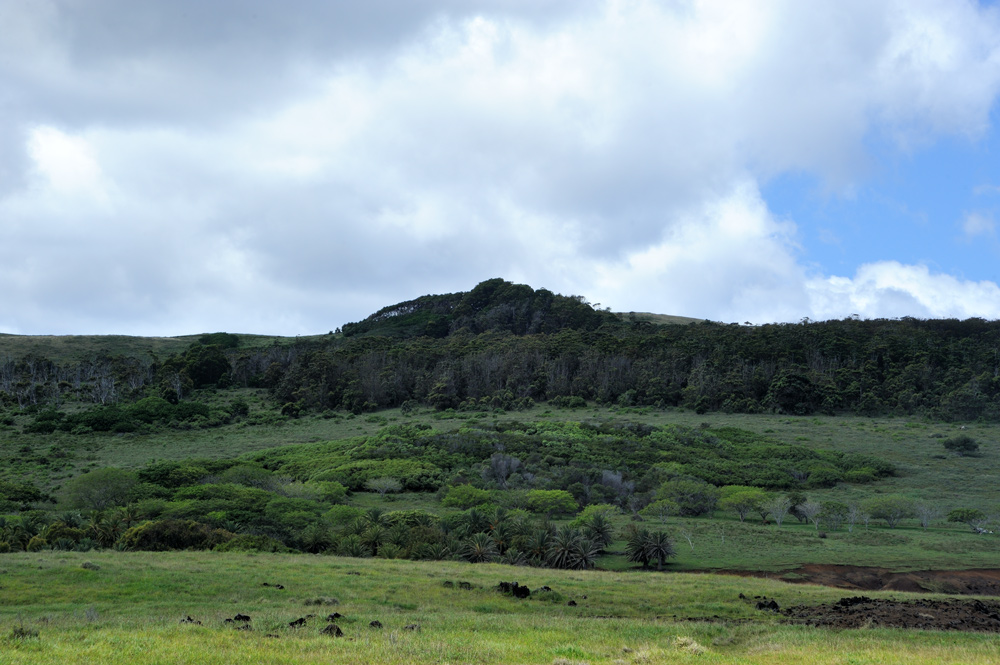
The economy of any Polynesian people is very simple, thanks to the gentle climate of Polynesian islands and natural laziness addiction to a philosophy of population.
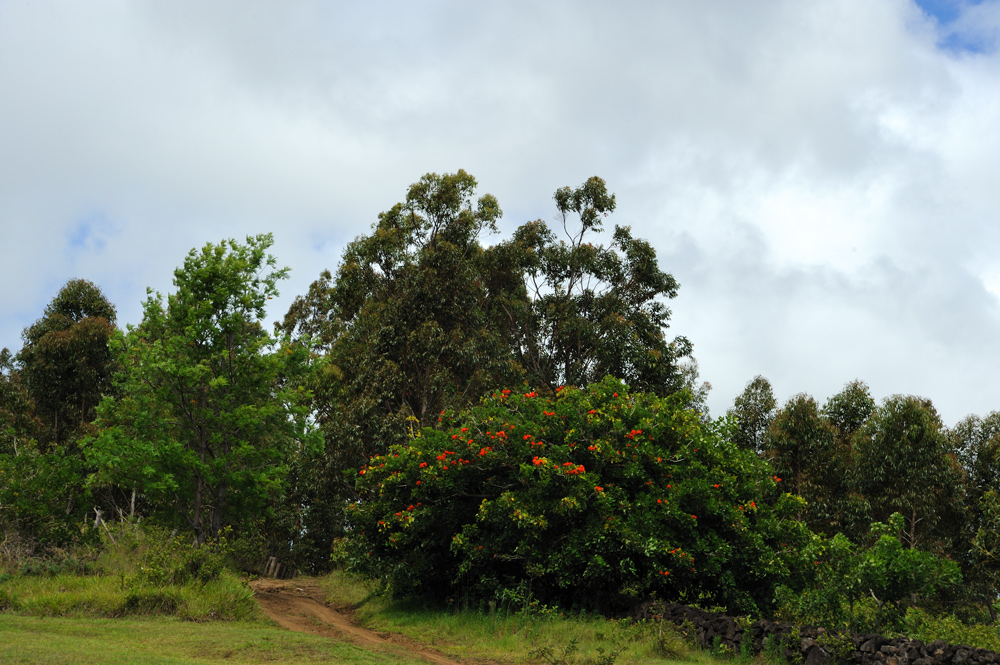
The only problem was freshwater. The islander carried water from the lake in the craters and made small basins and wells to collect some rainwater. Often they didn’t have enough fresh water and drank semi-salt one.
They lived in huts, thanks to the warm climate.
This is the reconstruction, but a very good one. First European who visited the island saw such huts.
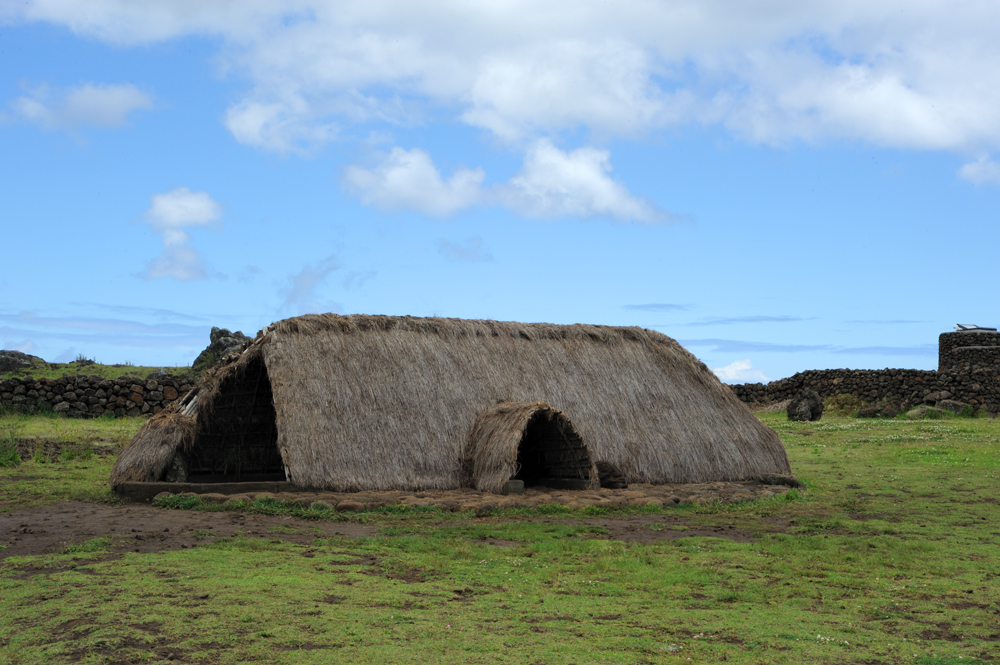
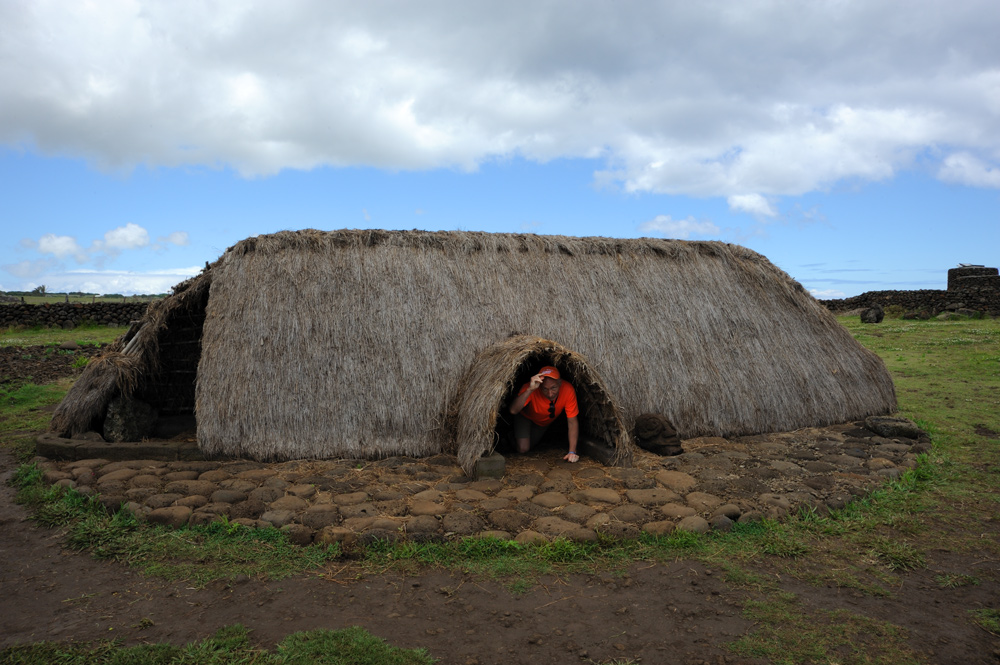
The islanders cultivated yams and some other low-maintenance plants. They caught fish and performed very extensive animal farming.
Migrating Polynesian usually took with them pigs, hens and dogs. On new place animal were realised; time was given to them for replication, and after people just hunted them when needed.
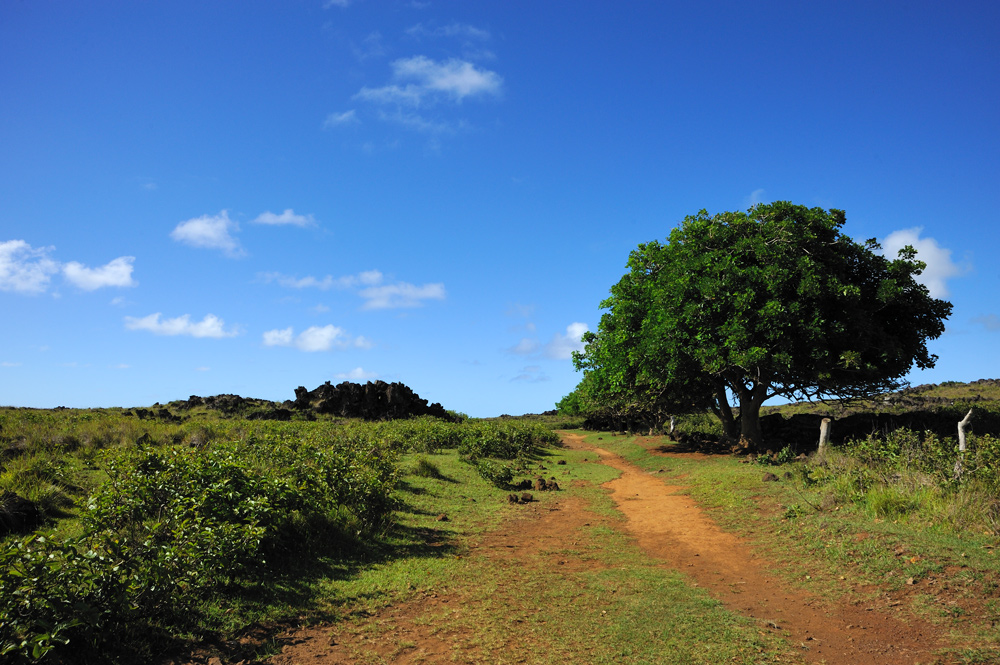
On Eastern island, Polynesian brought only hens. Dogs and pigs probably were eaten during long travel.
Chicken, the only meat, was delicatessen, holiday dish and gift to gods. Even now, hens can be met everywhere on the island.
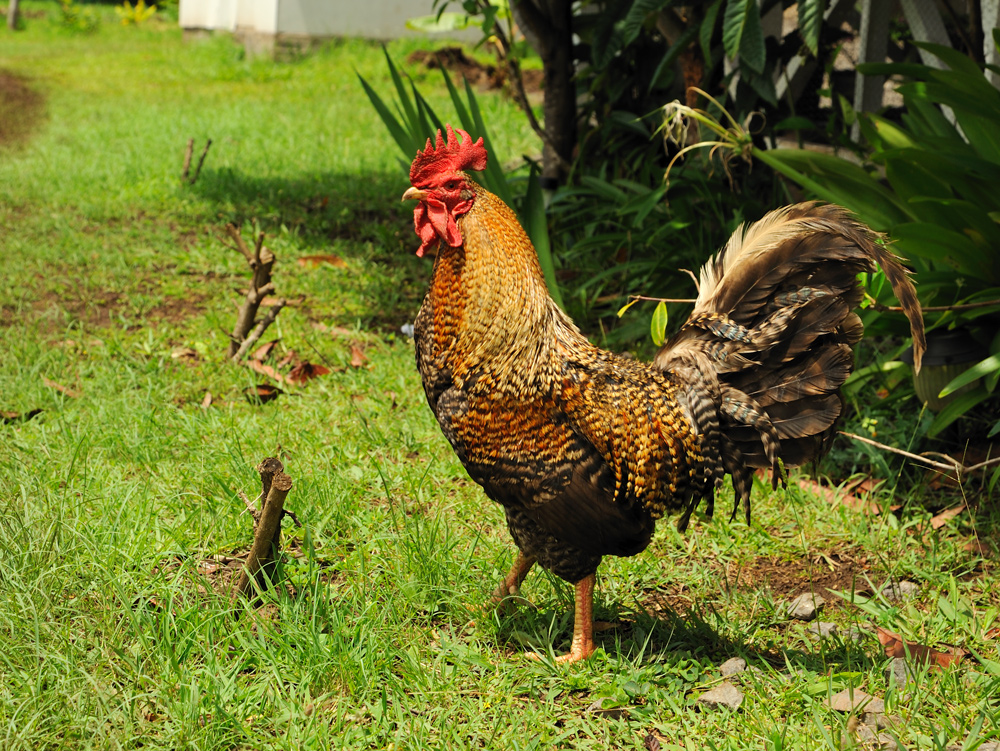
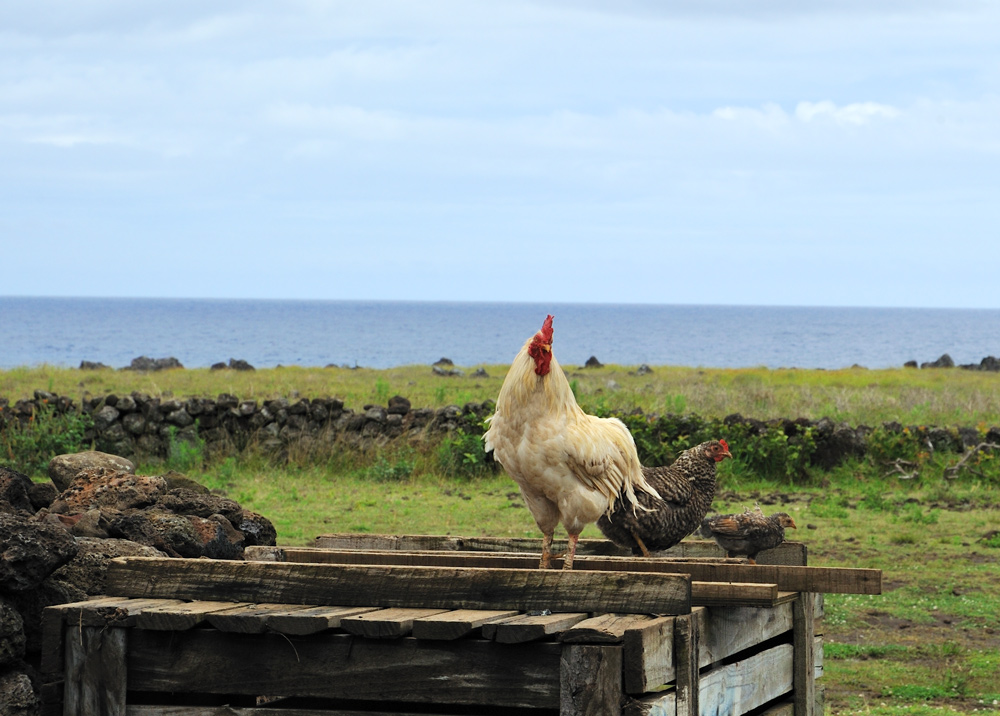
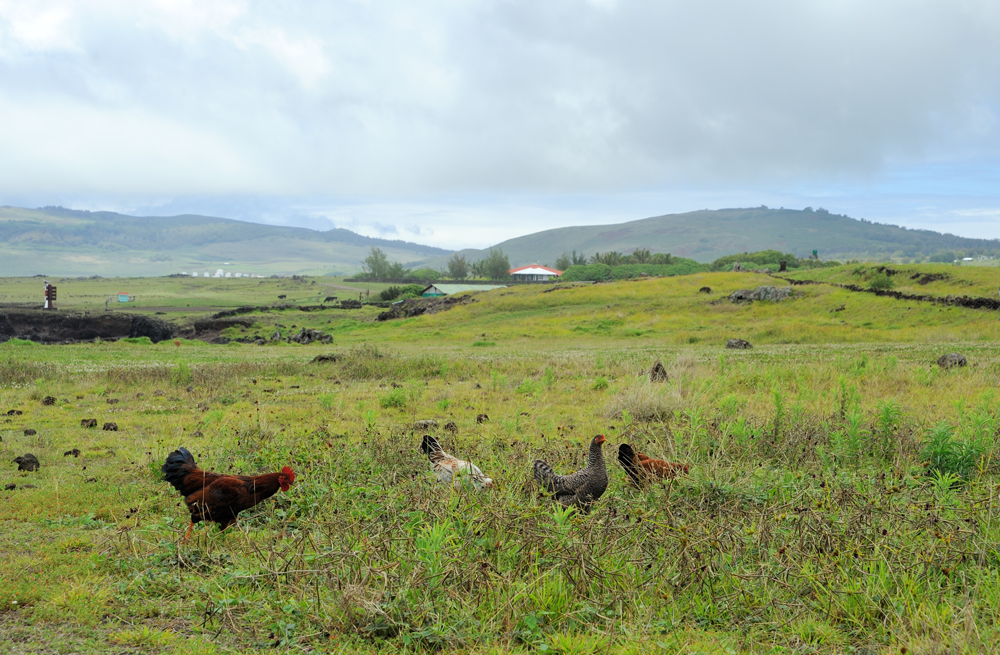
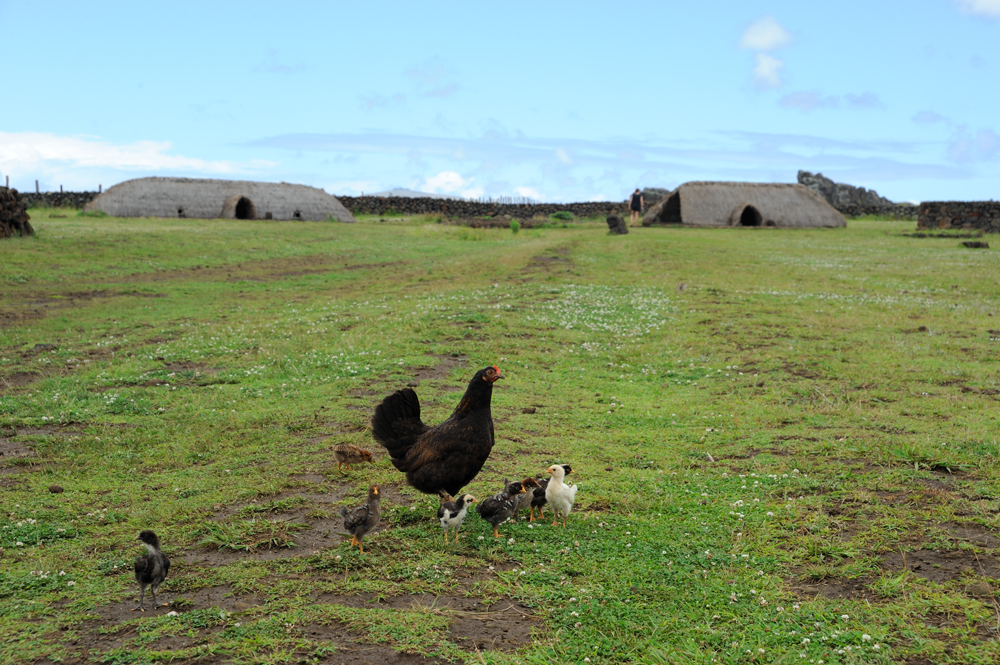
People also brought Polynesian rats to the island. Well, they came as a stowaway and populated the island. Rats were considered as a special delicatessen. Later common rats, that came with European ships, populate the island and exterminate all Polynesian rats.
Europeans brought to the island cows, horses and sheep.
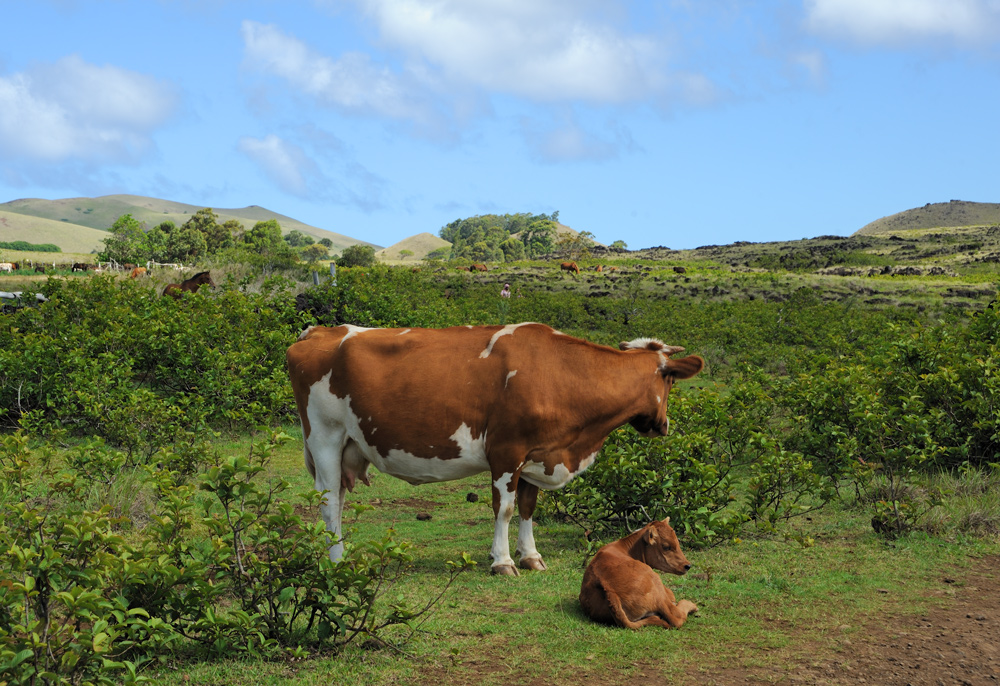
This sight hint at free walking bulls.
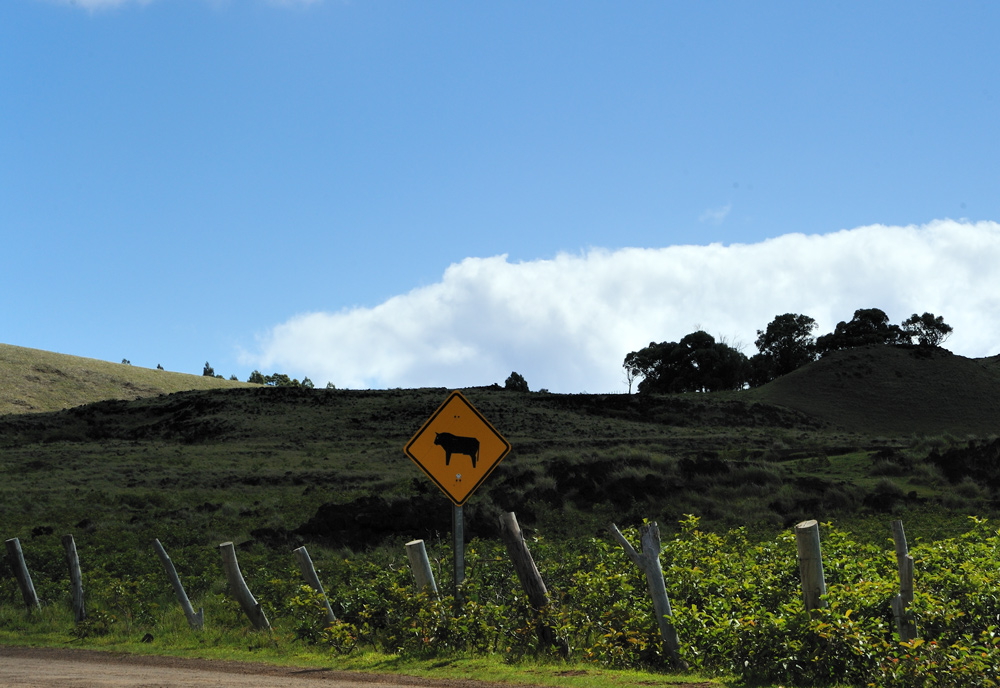
Here they are. Very unfriendly, I should say, so pay attention.
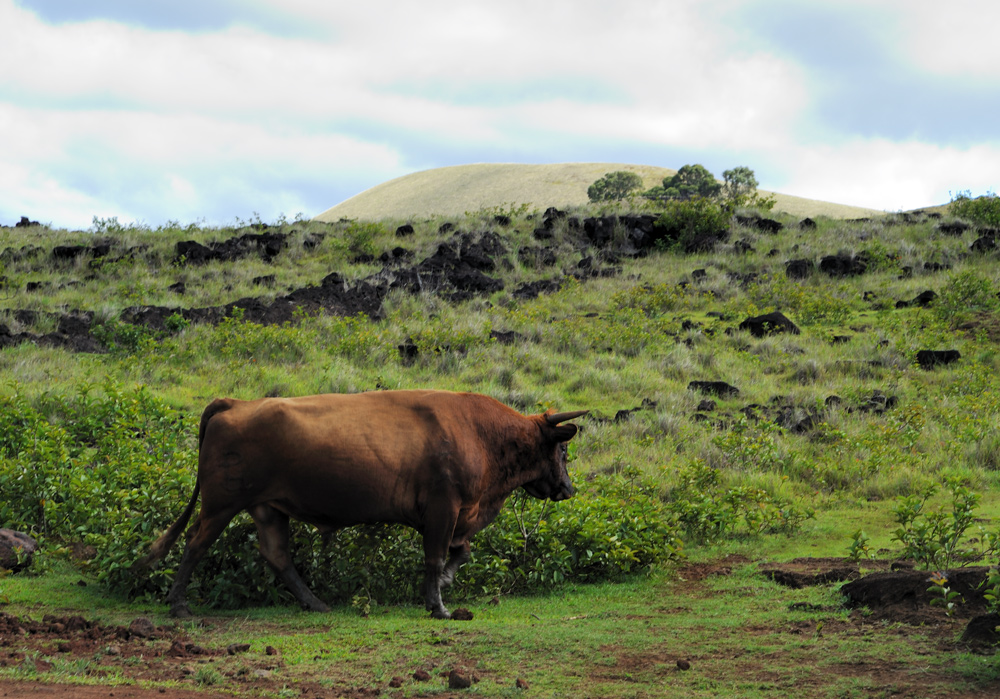
Stallions also run on the island. This one hunted the mare with definitely sexual purpose. She was not agreed.
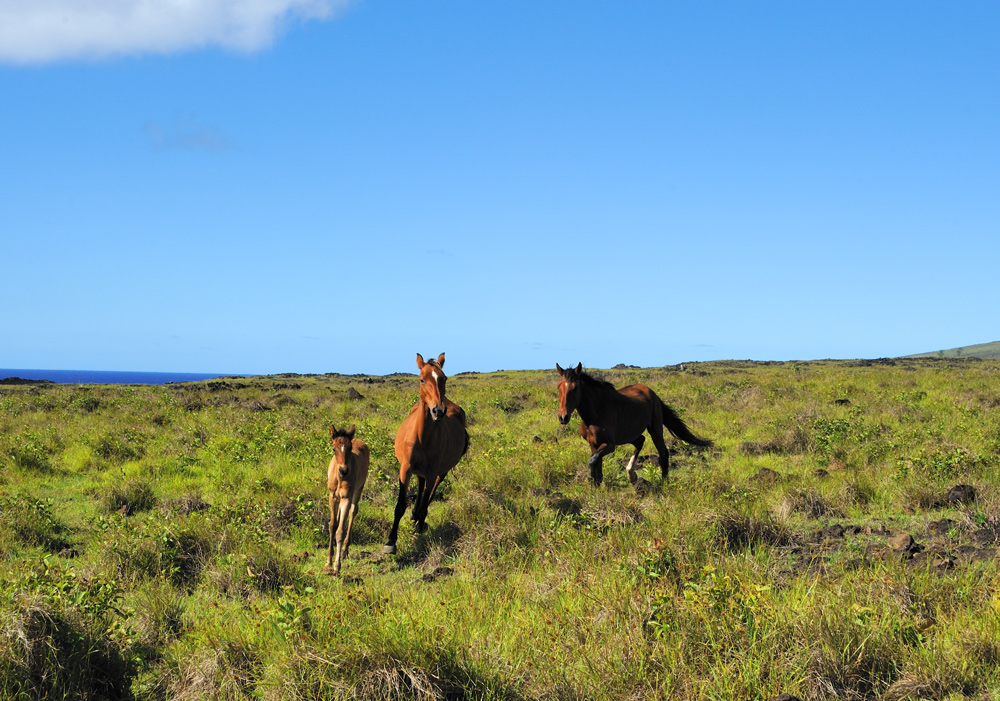
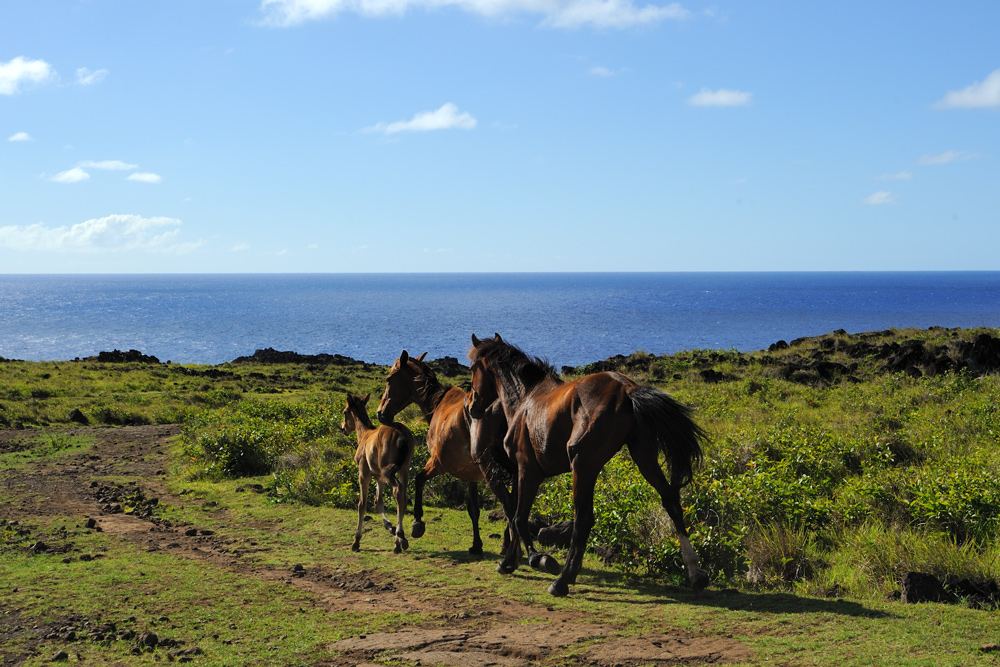
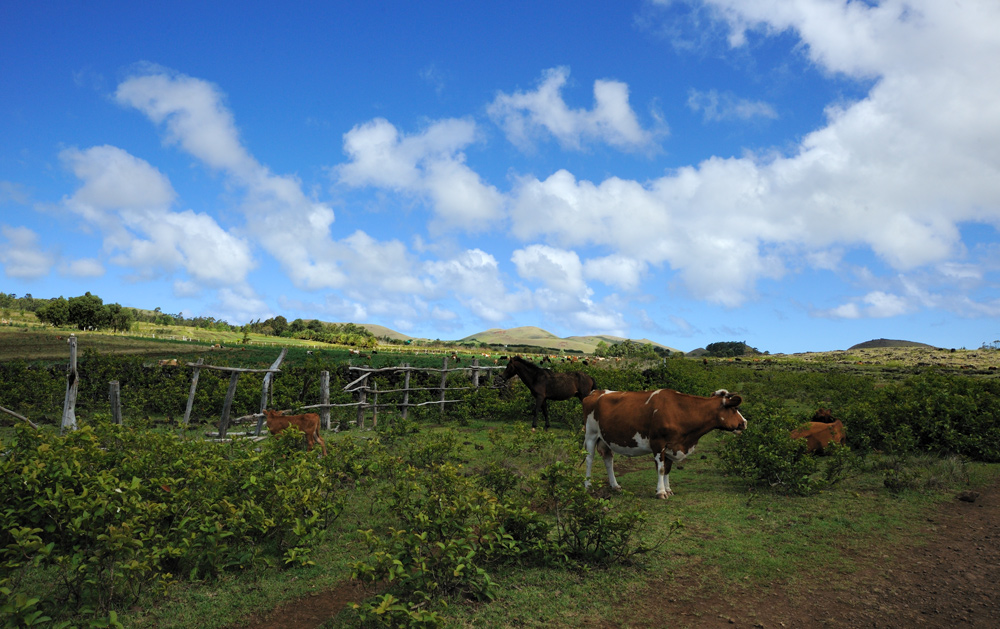
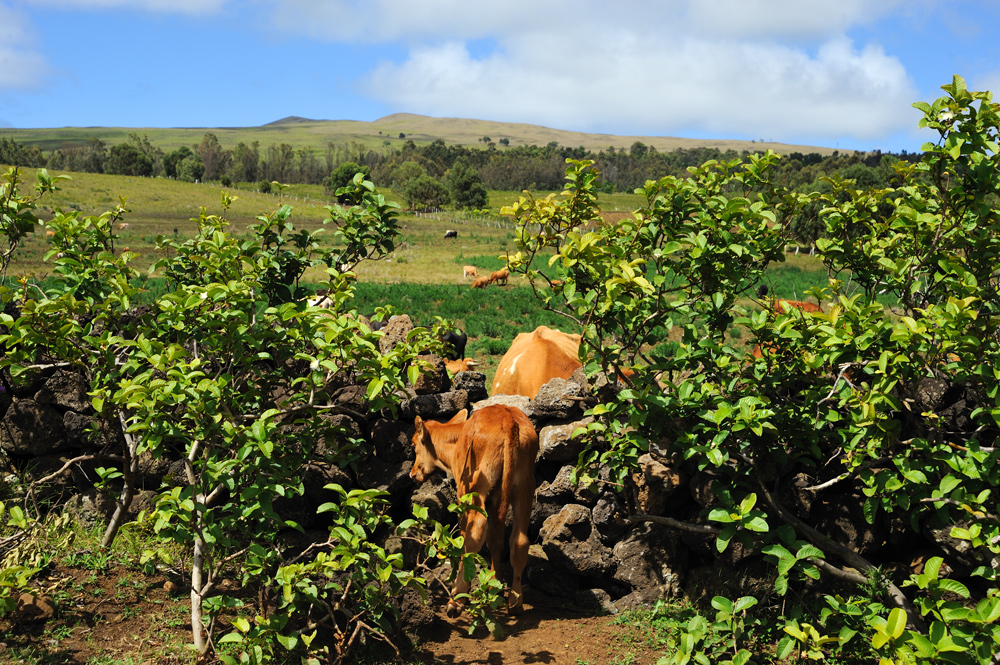
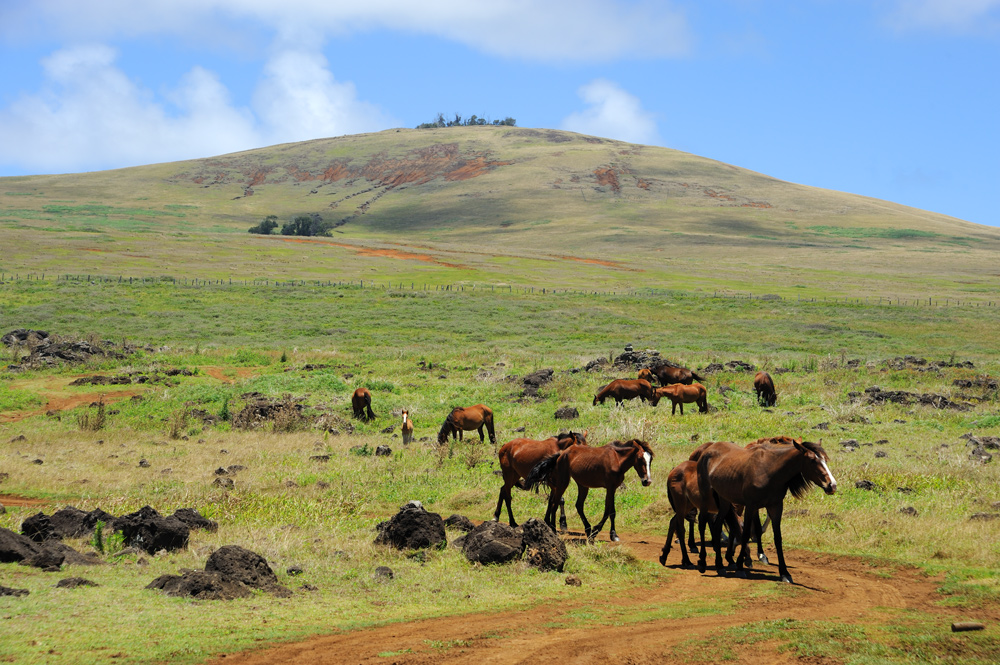
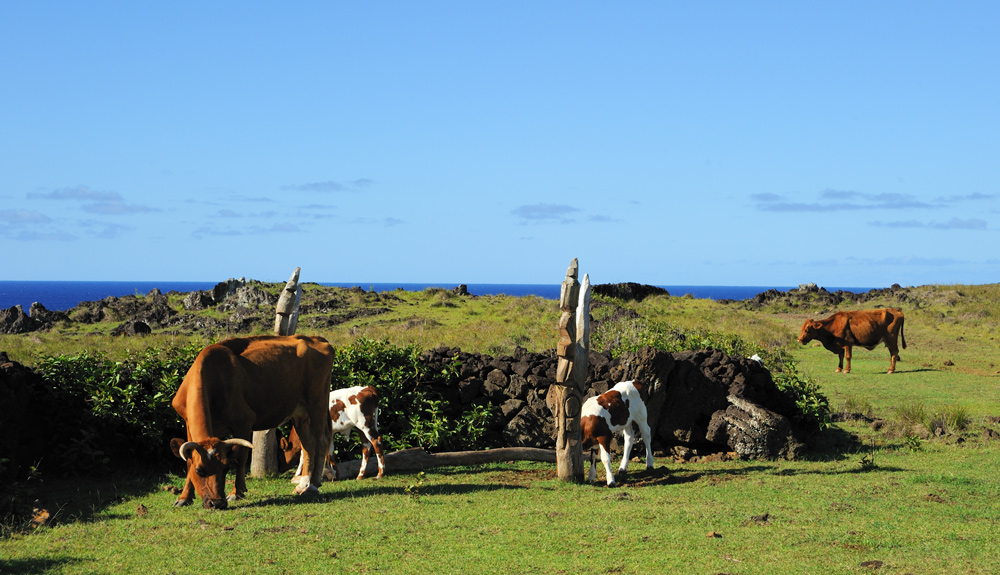
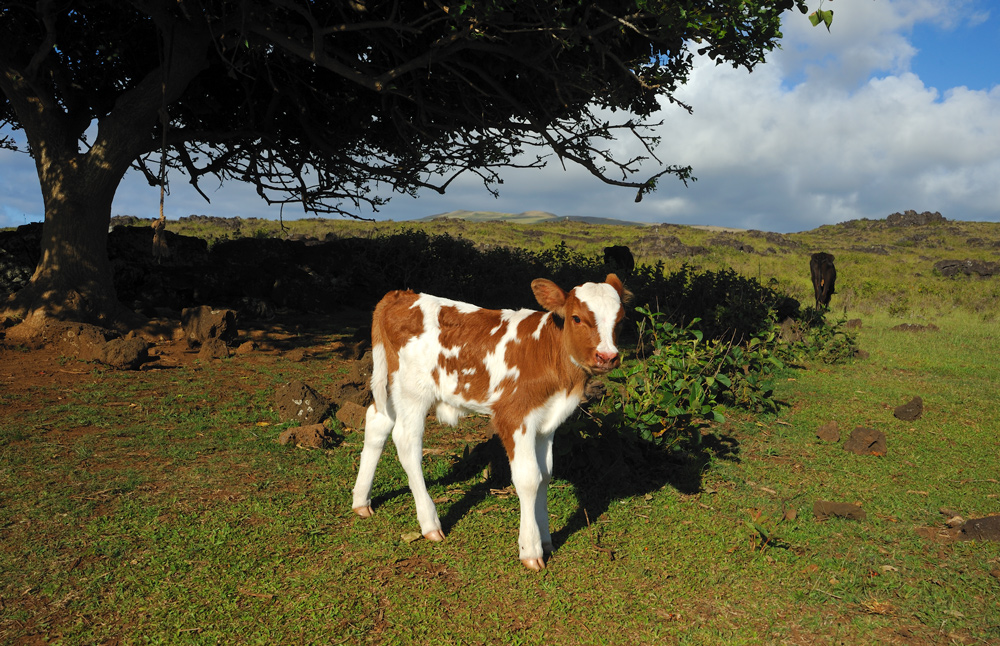
Nowadays the island farming is still very close to classic Polynesian style. Animals depasture freely and nobody cares about them. There are plenty of exhausted animals. We saw many just died copses near the road. Looks like, caws and horses cannot find the water; the grass is not juicy enough, and people don’t think about it. It is very unpleasant.
Horses found fresh rain puddle.
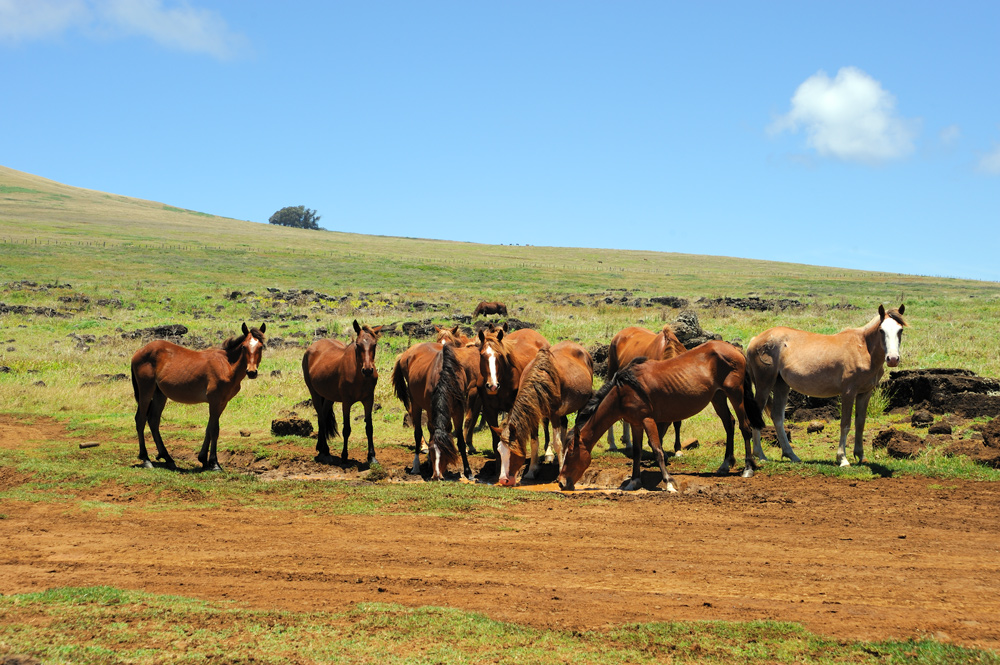
Pity that this one will be dry very soon.
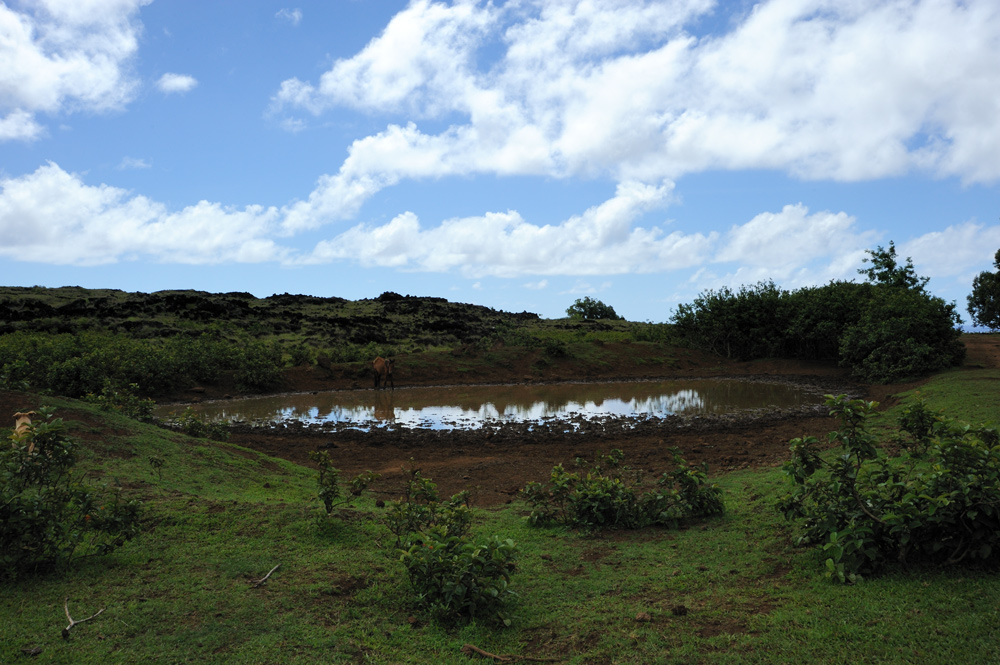
Dogs also were brought by European. They live manly homeless in the town and other settlements. They are very similar to each other and very kind.
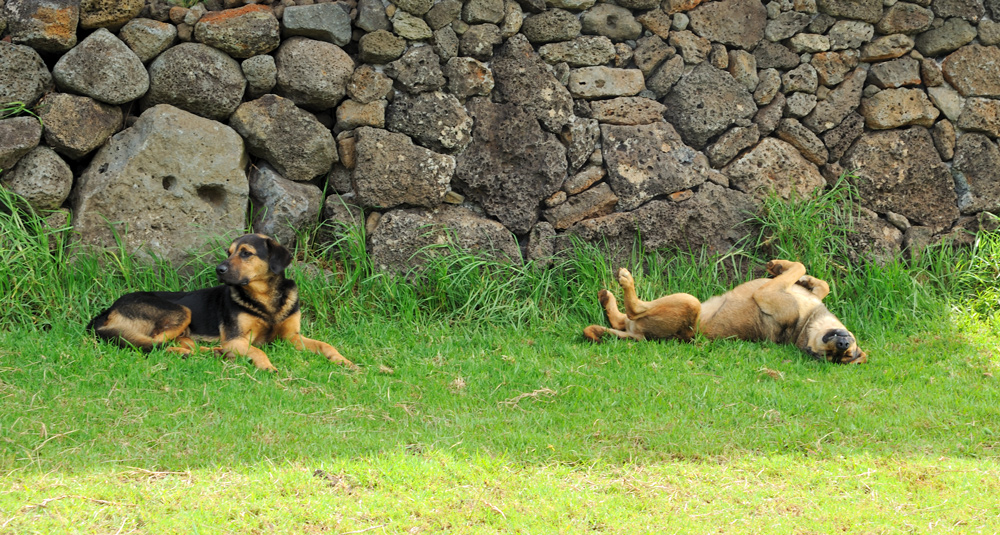
By the way, nowadays most food came to the island from Chile. The islanders grow some yams and fruits. Restaurants and shops always proudly mention that these frood has the island origin. Some seafood also catches on place, but mostly came from the continent.
